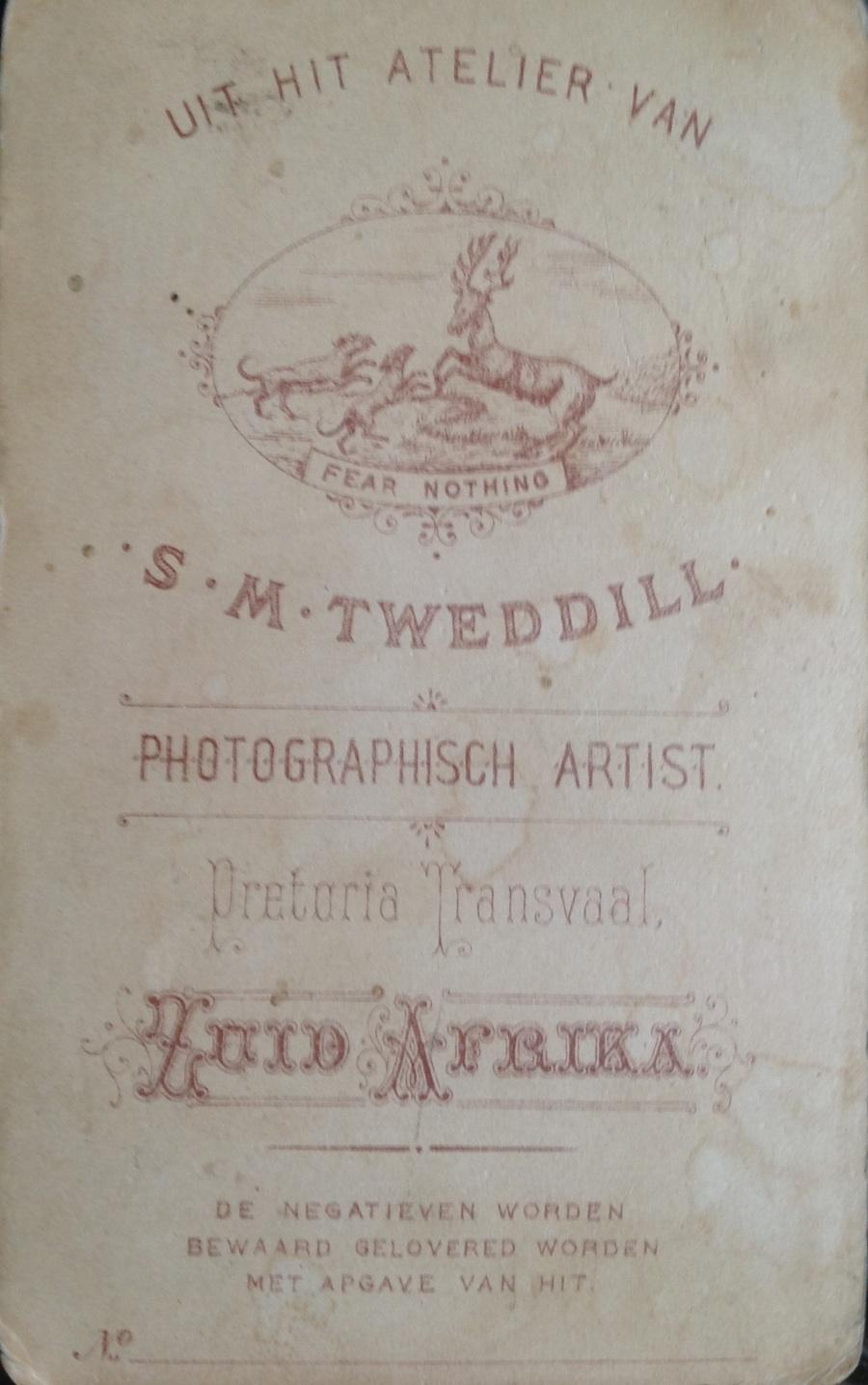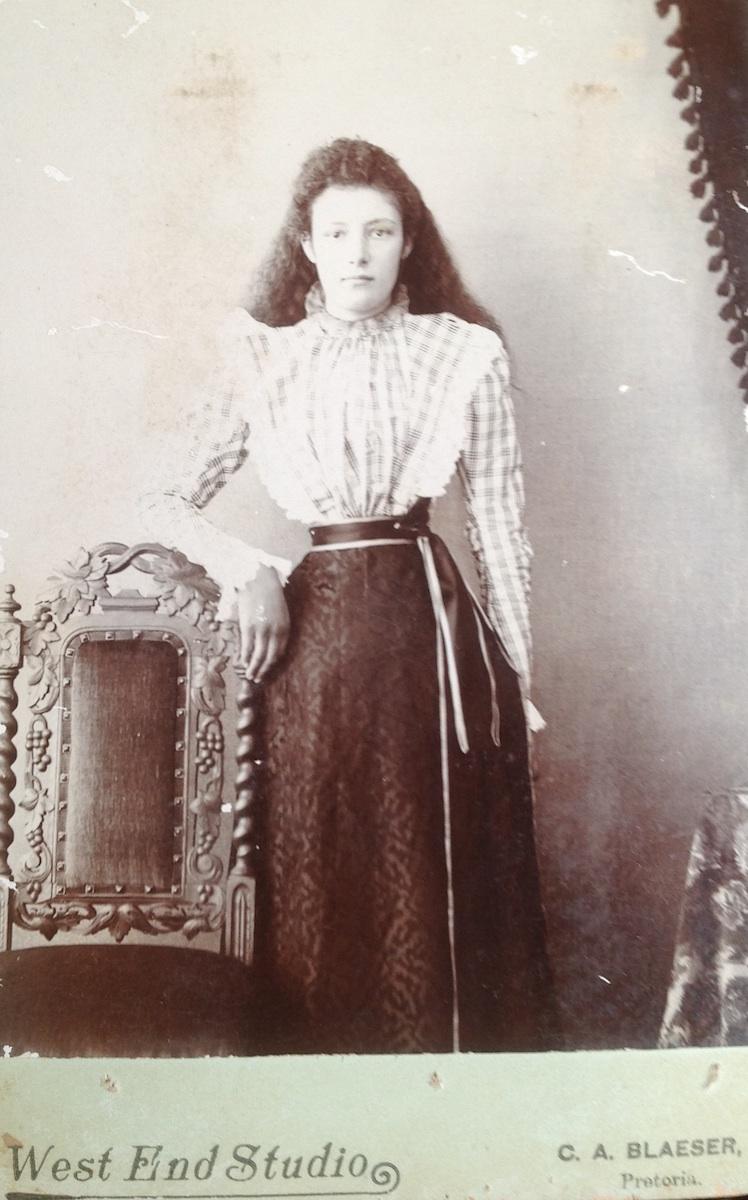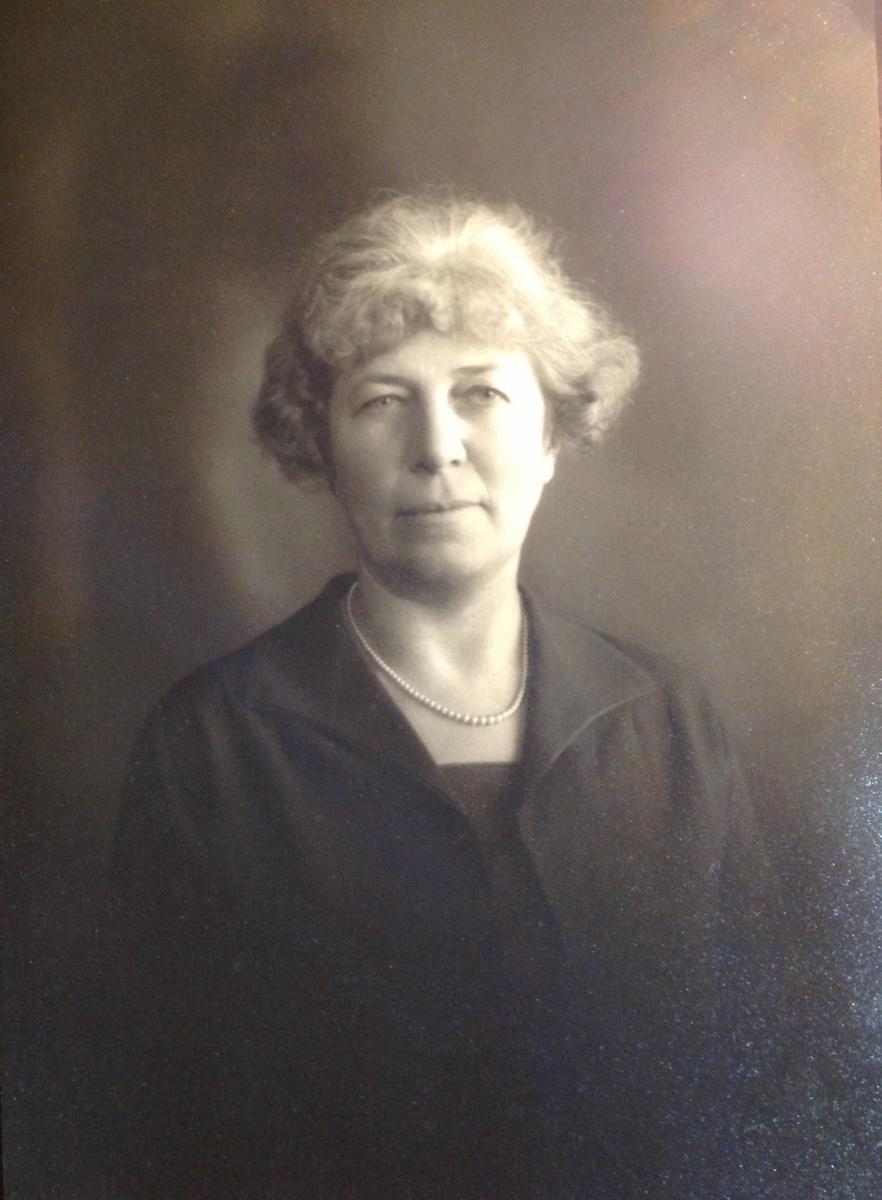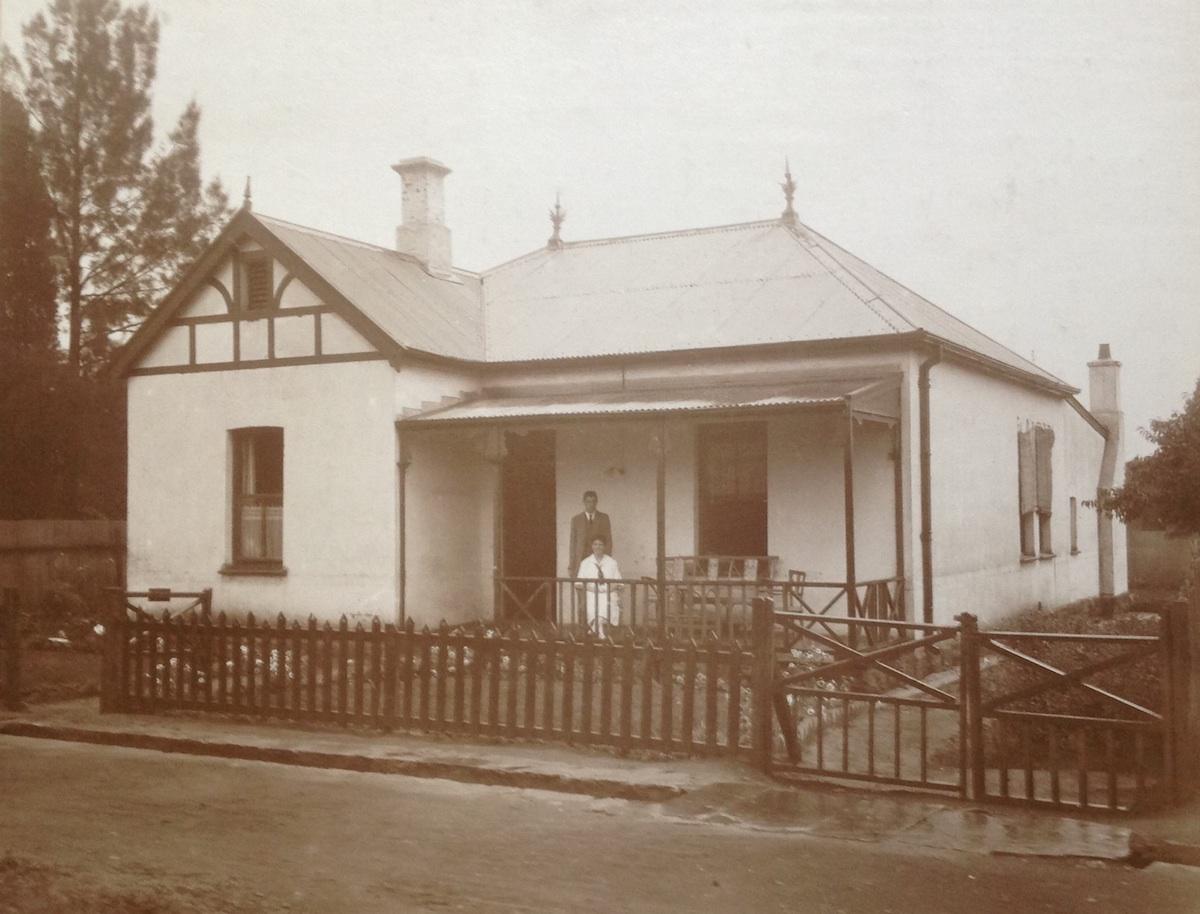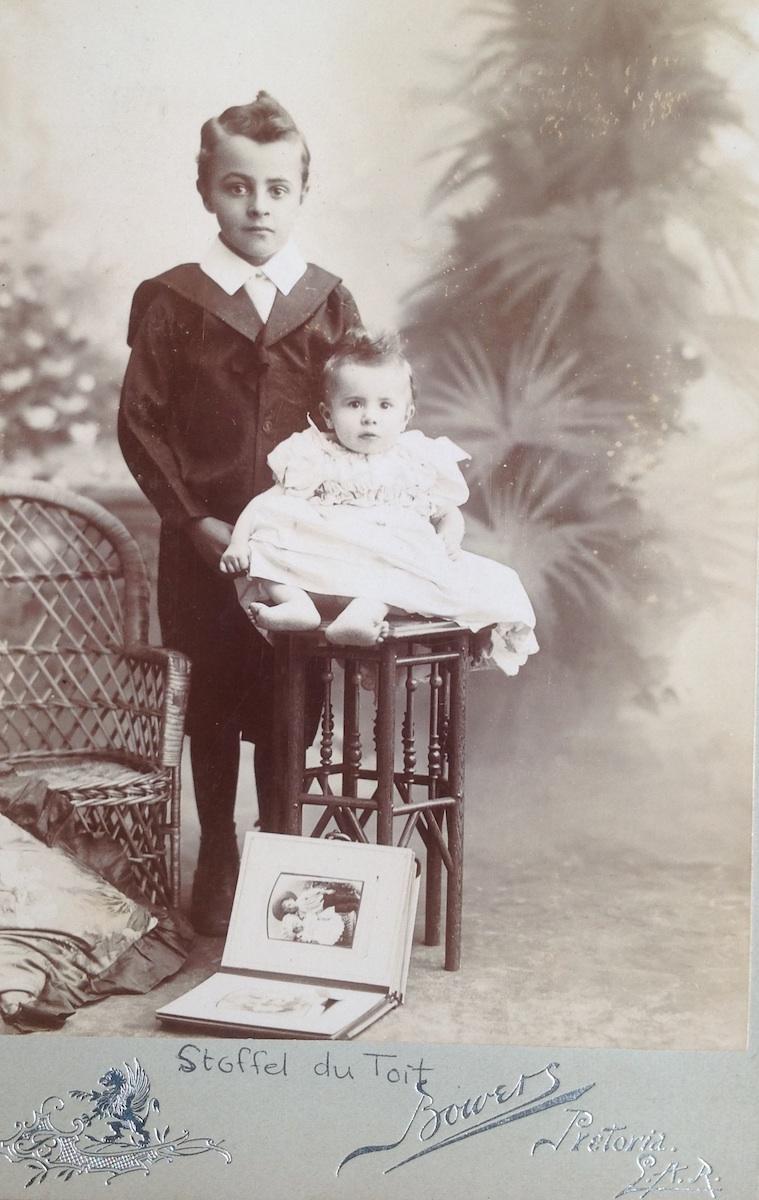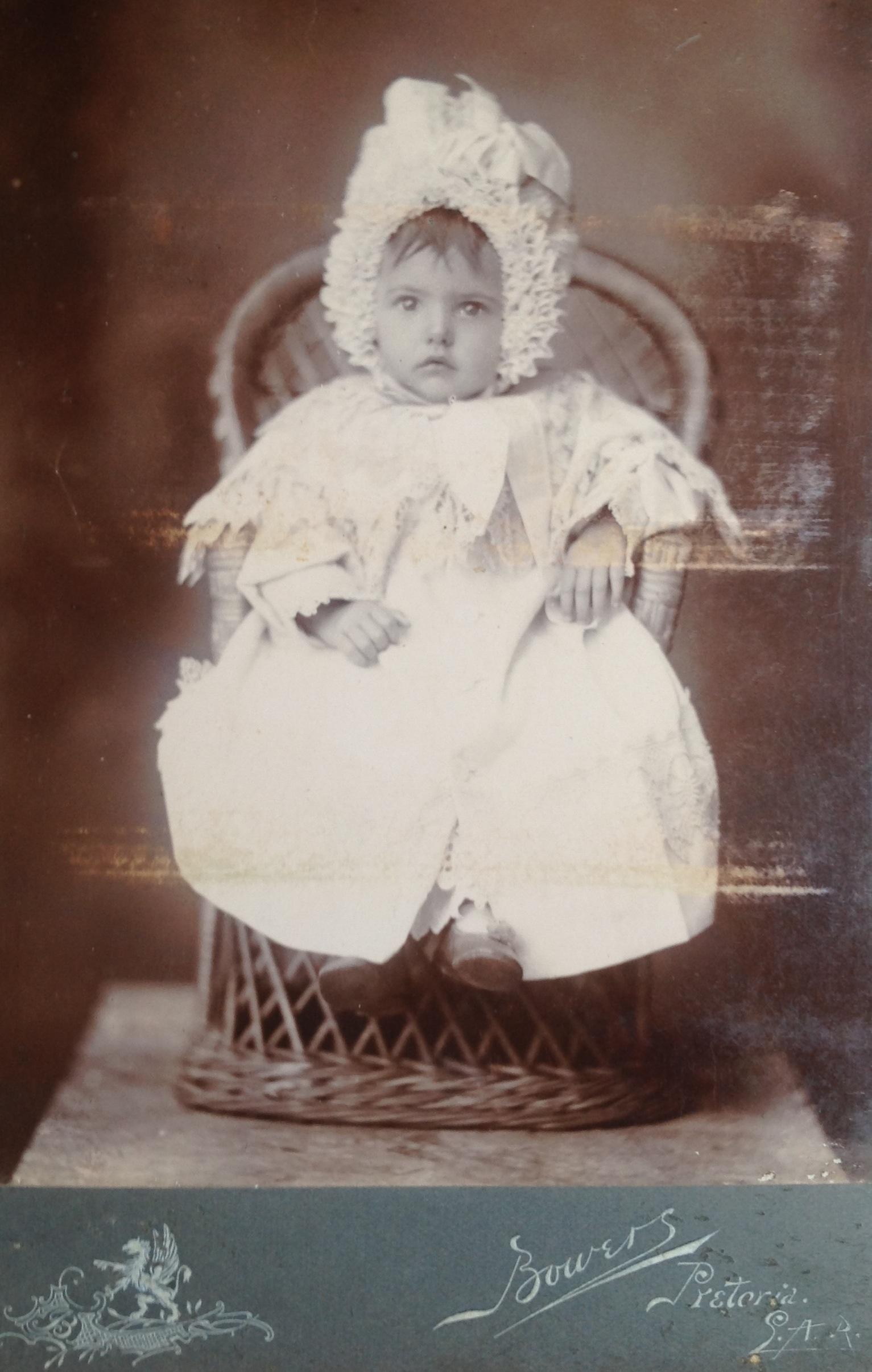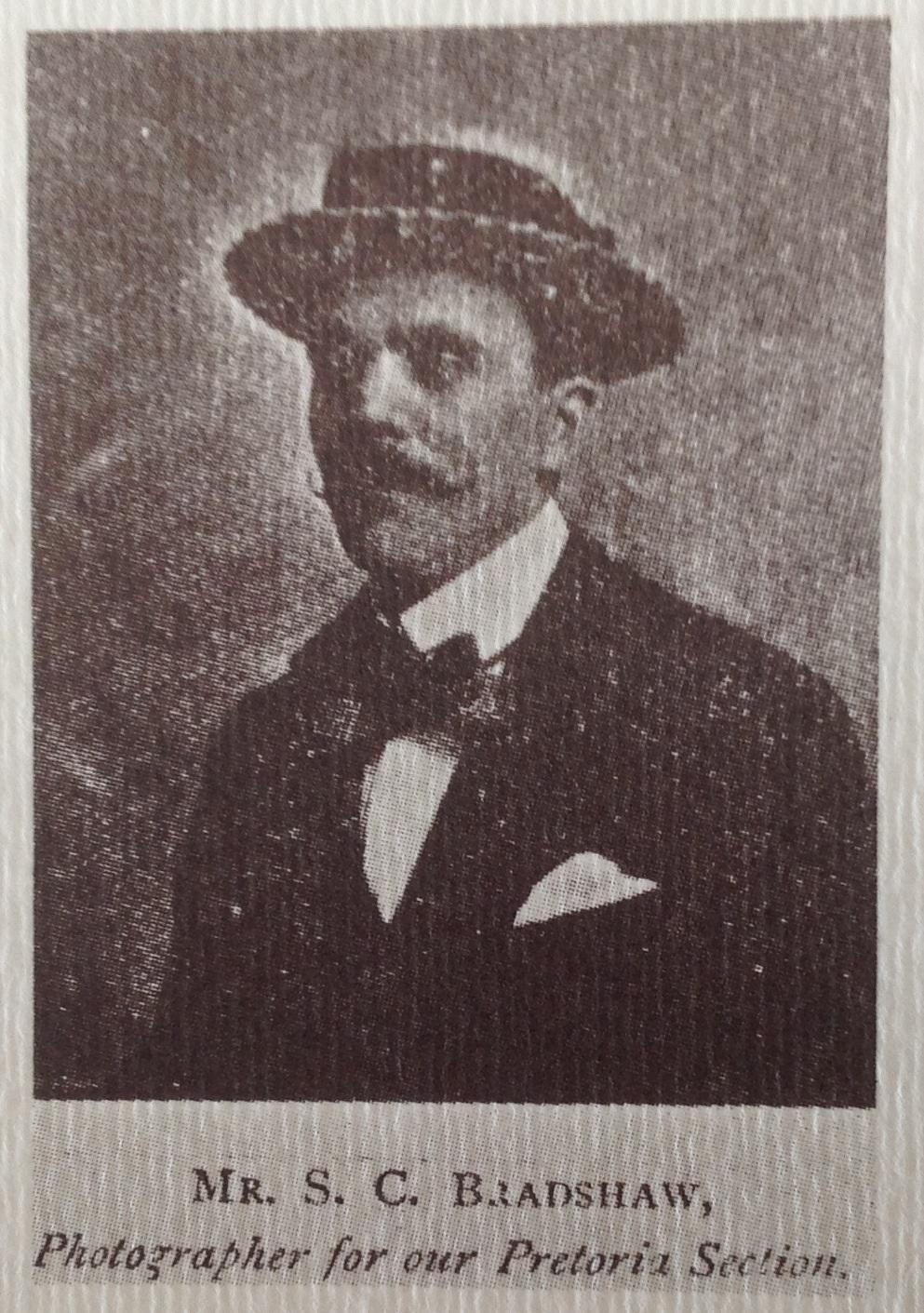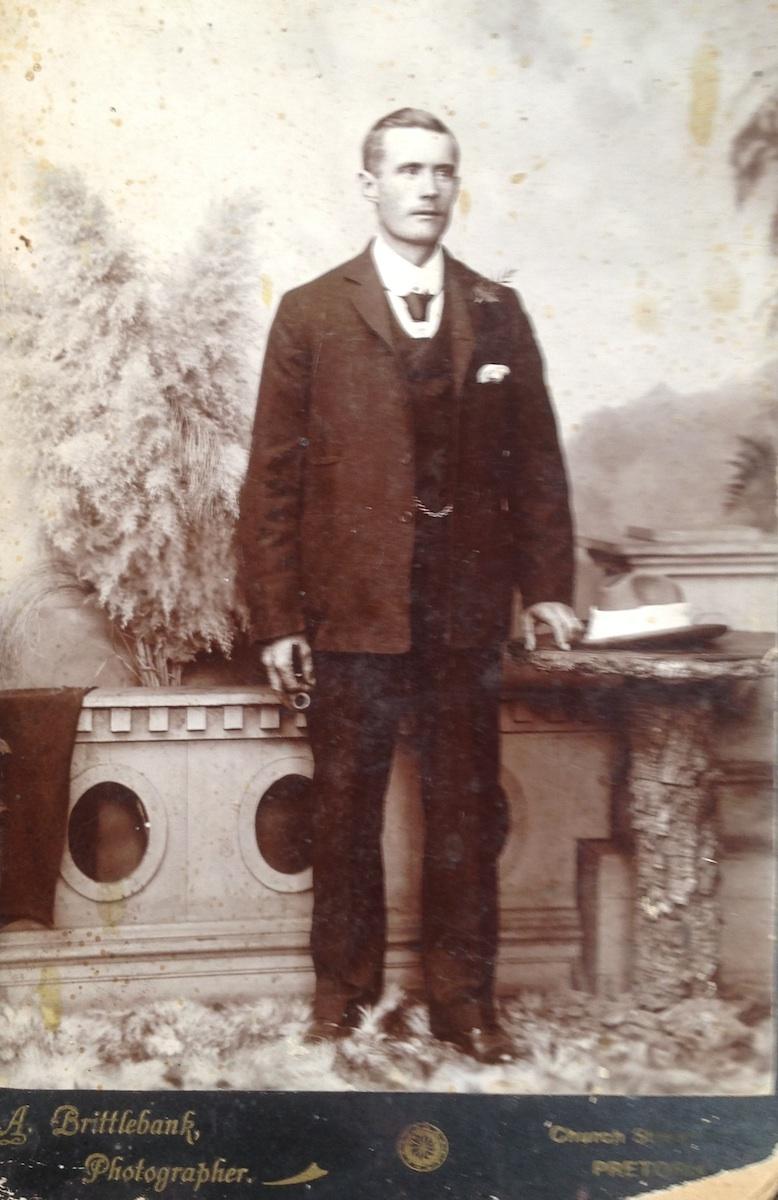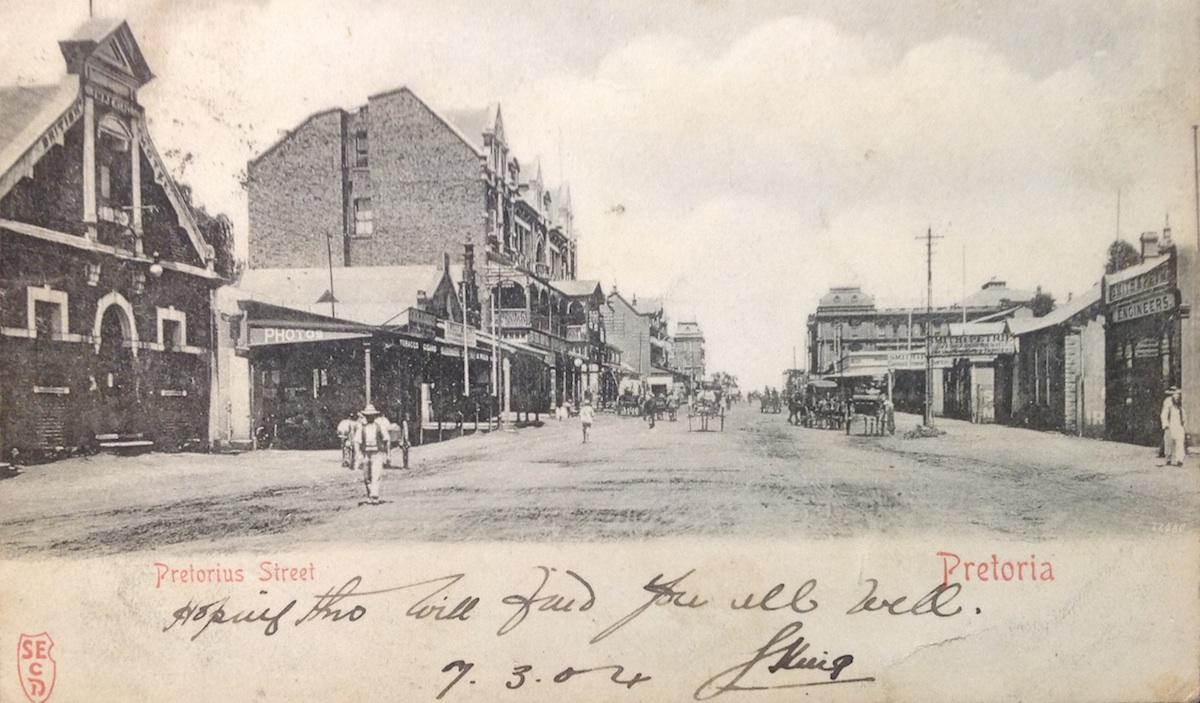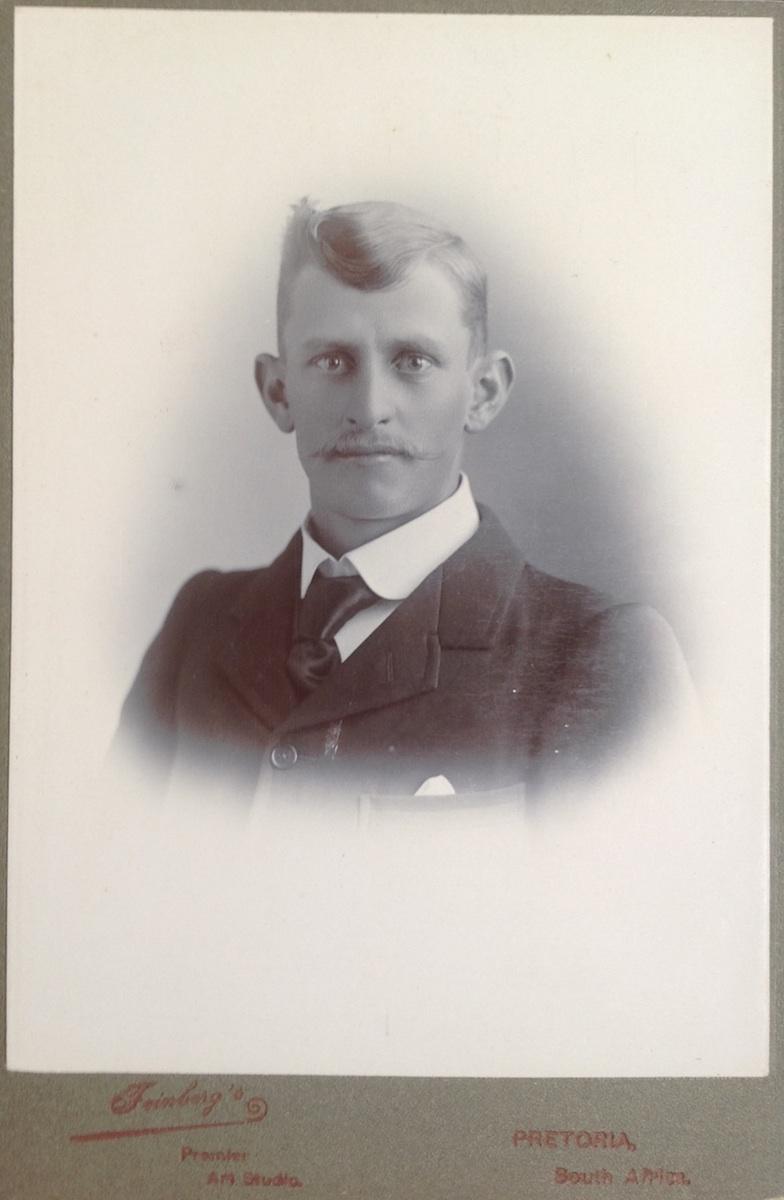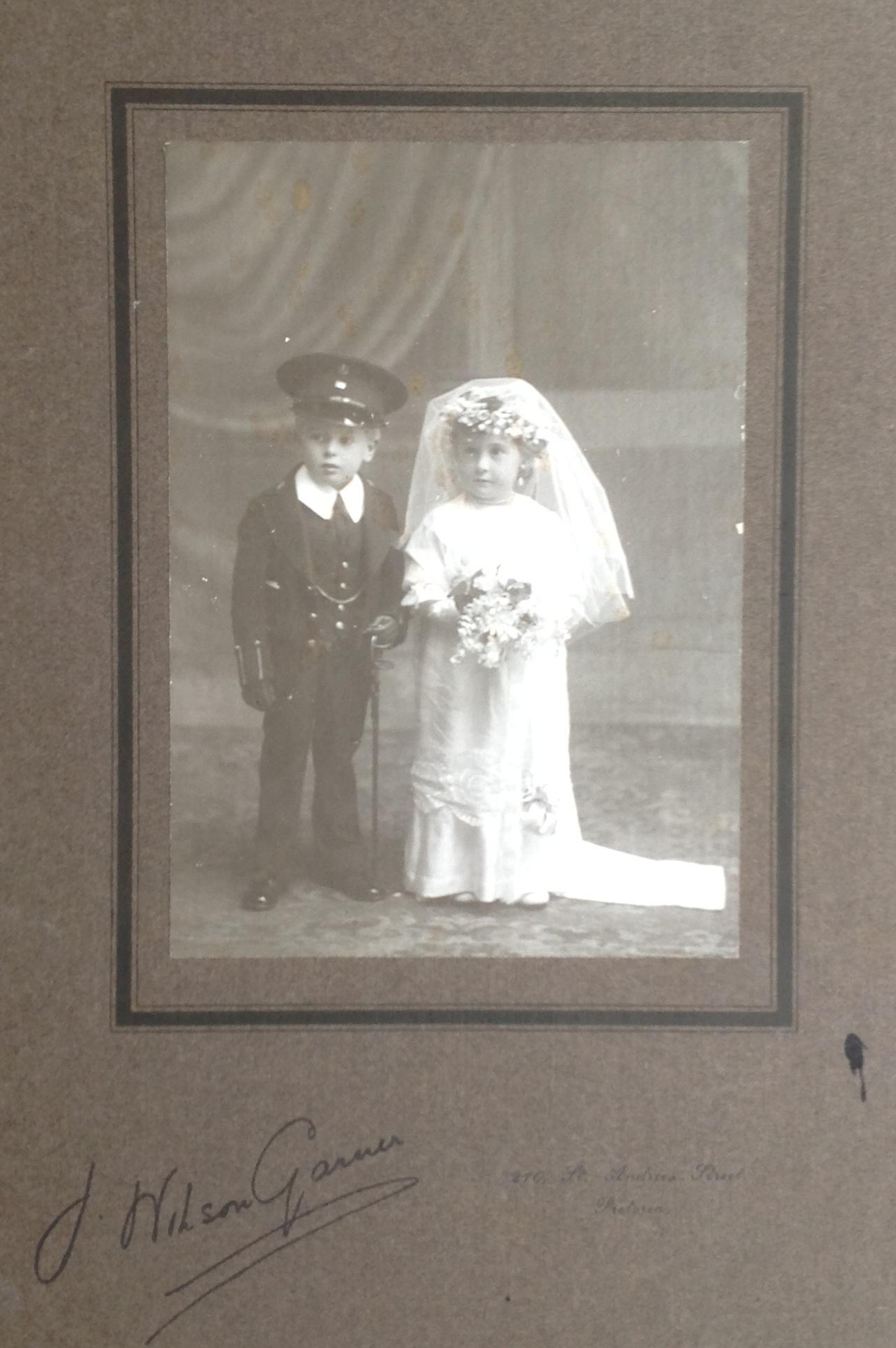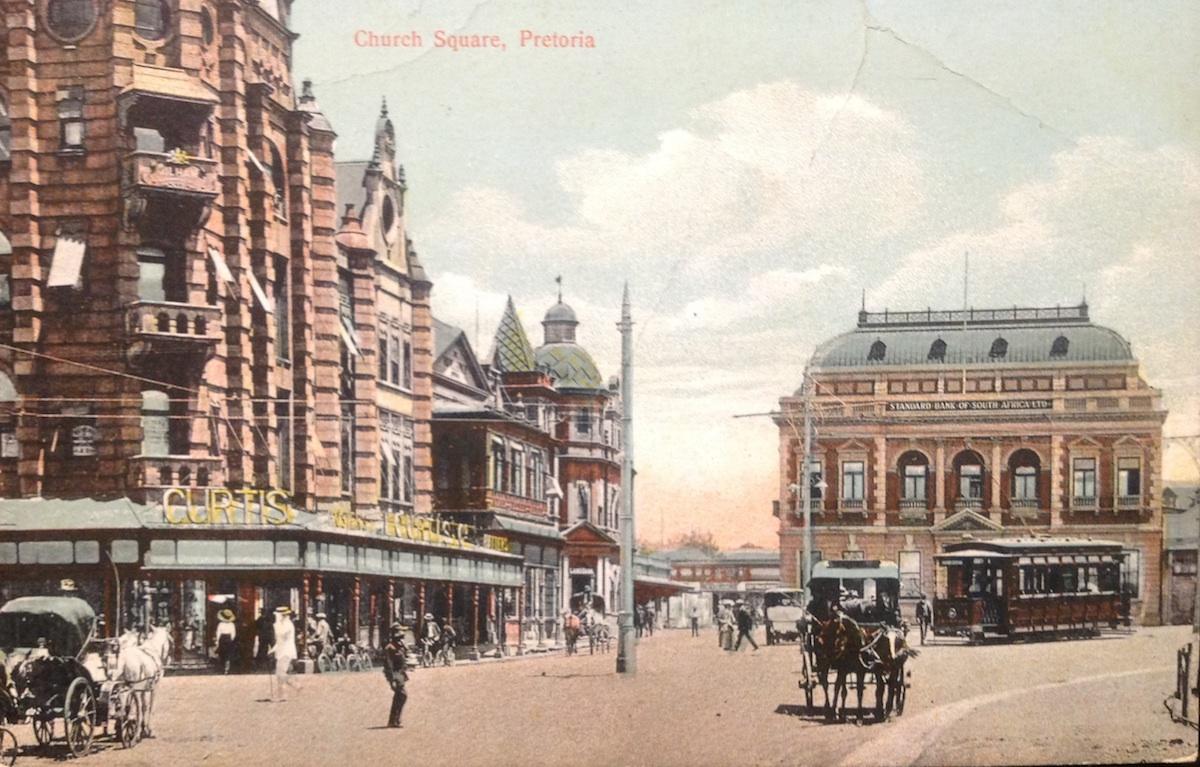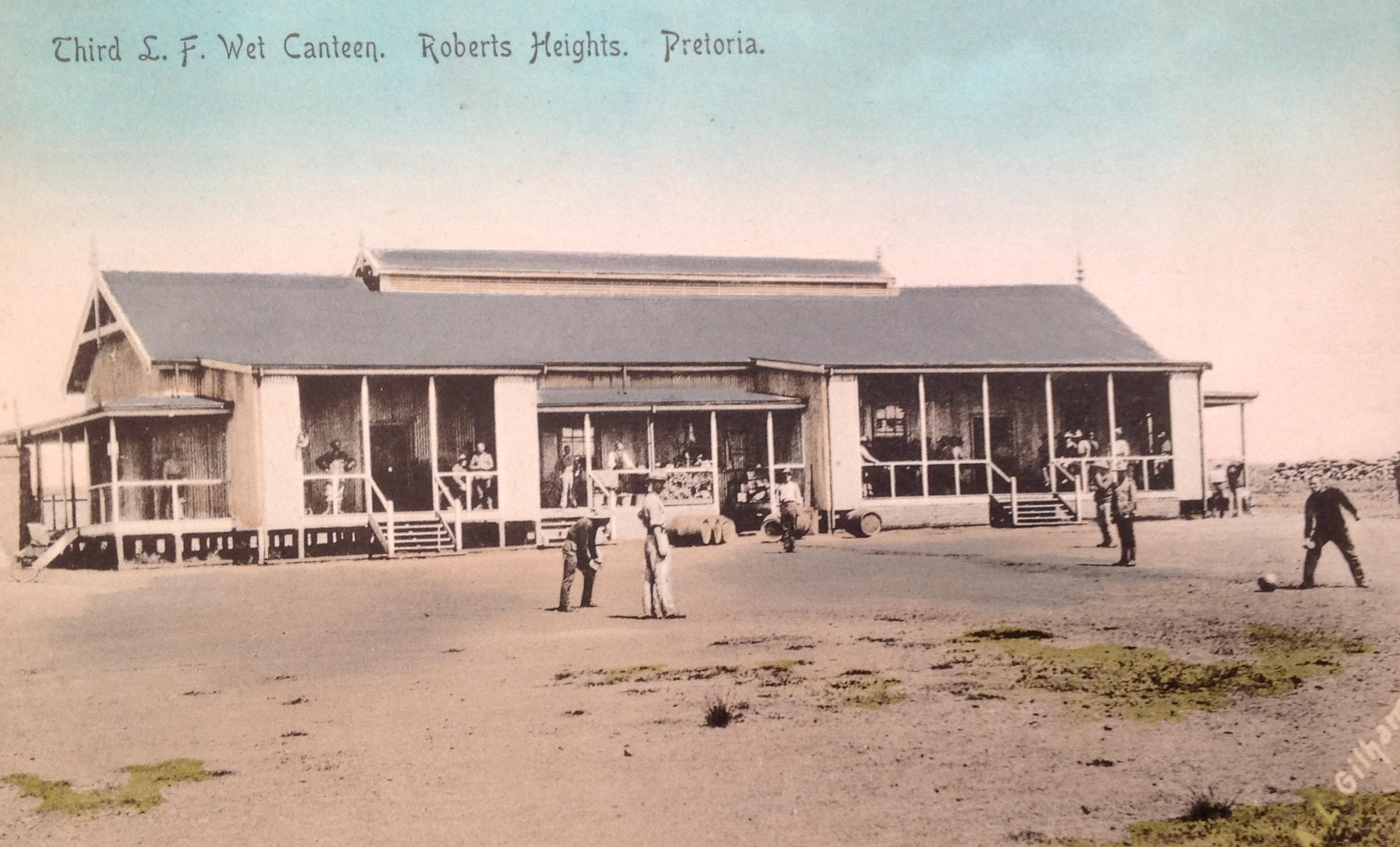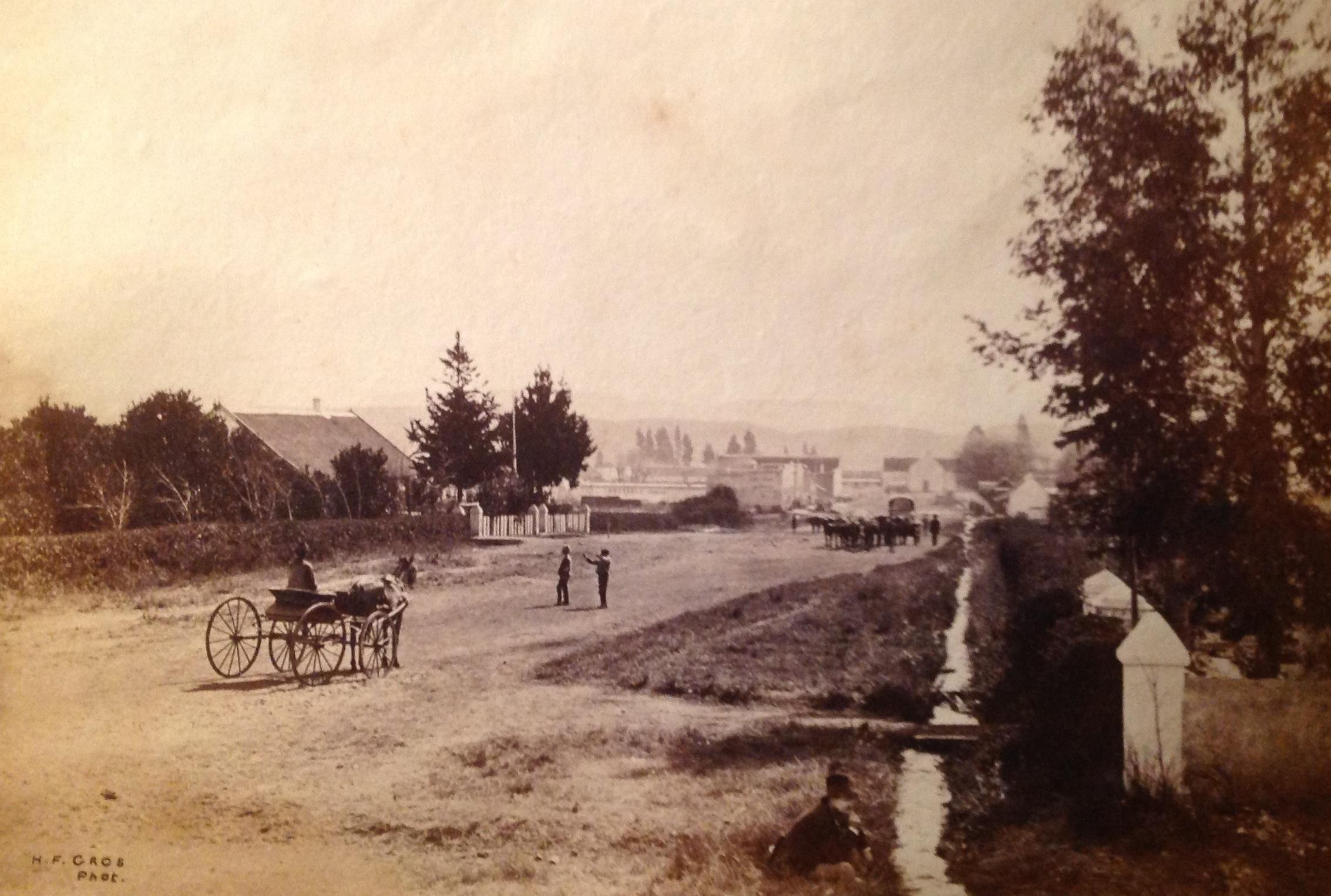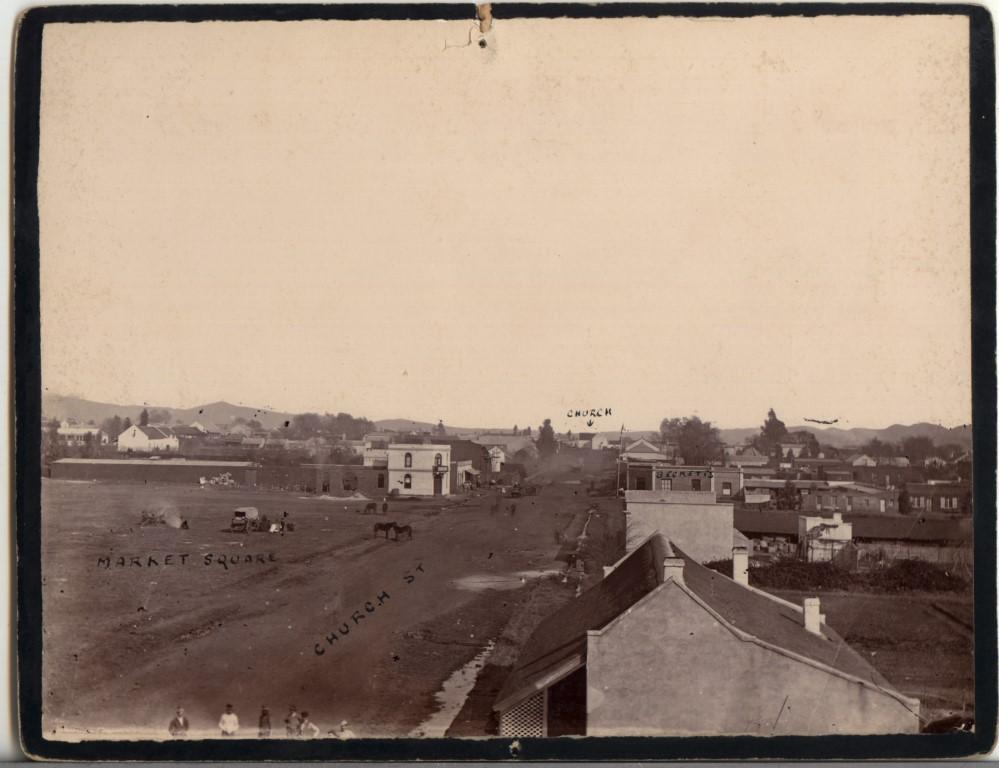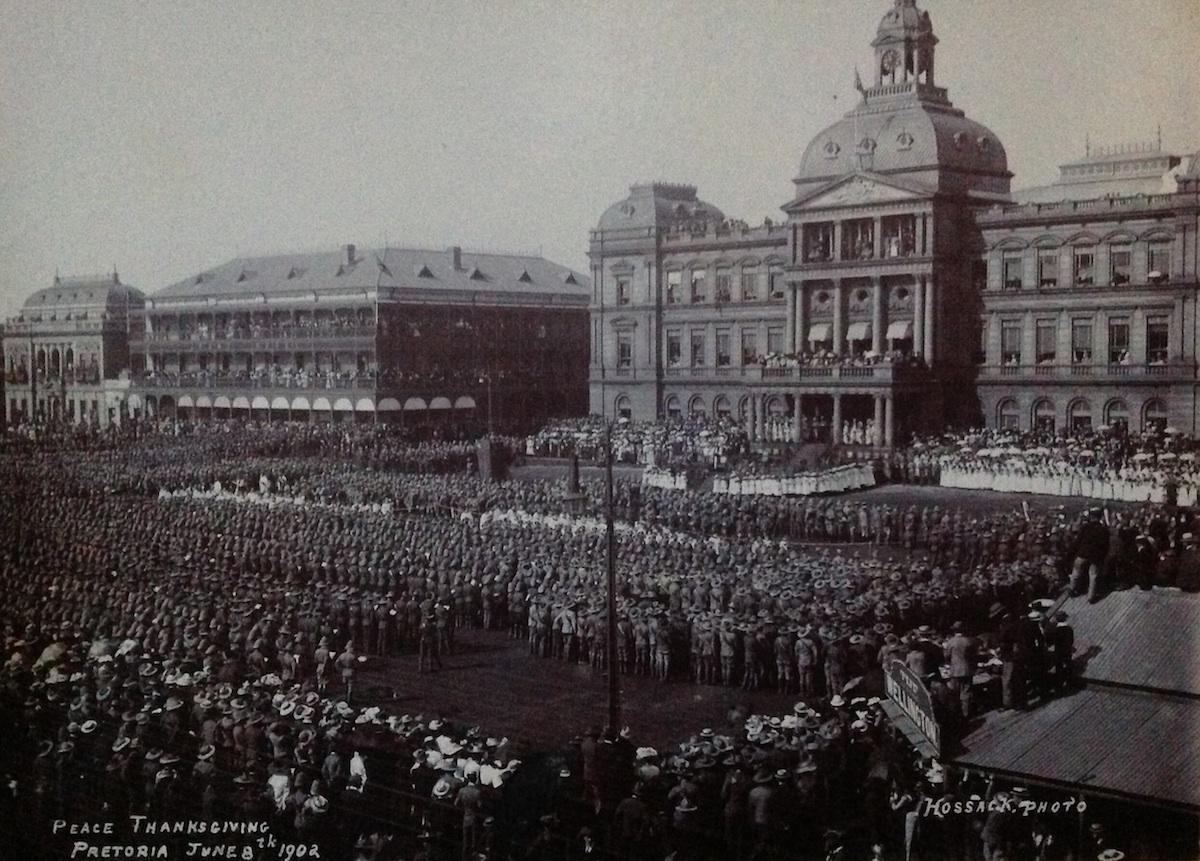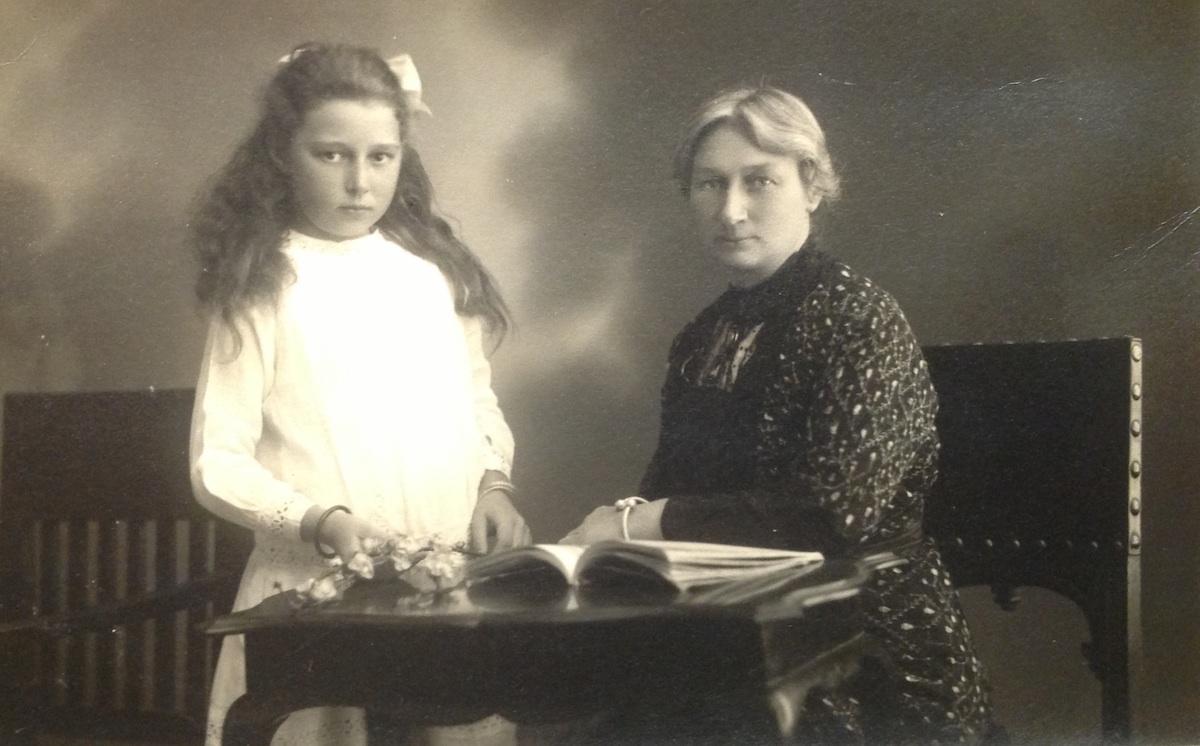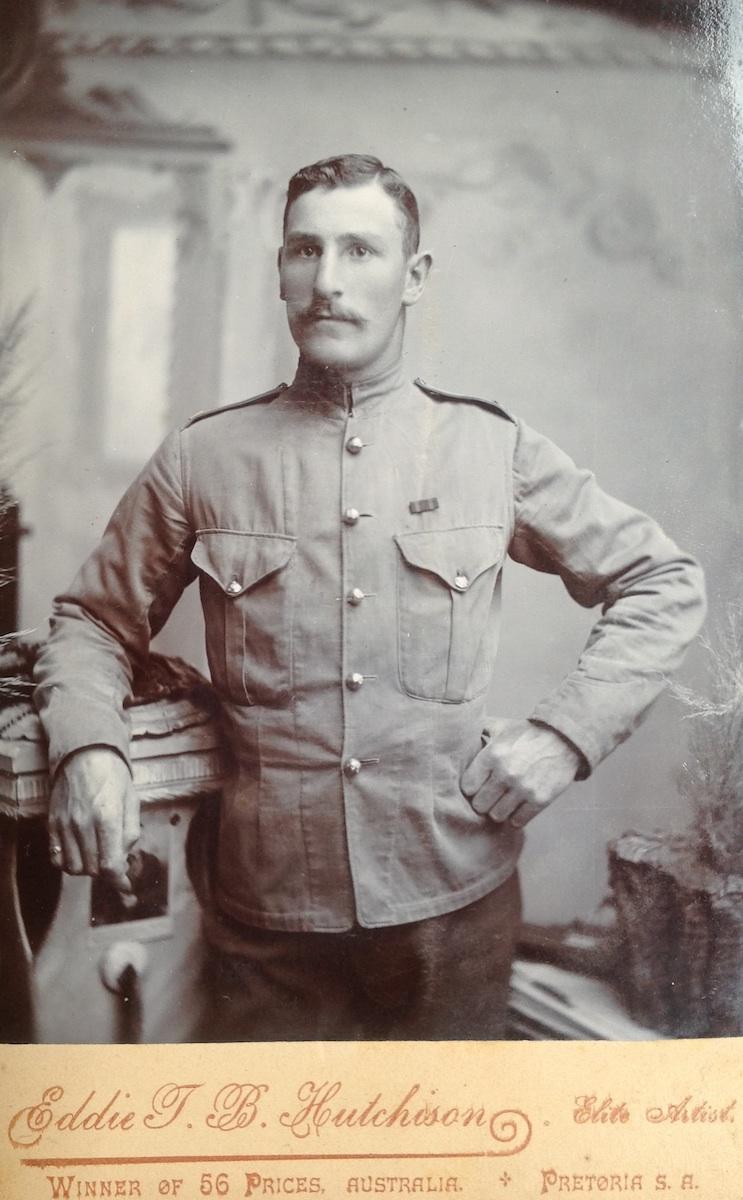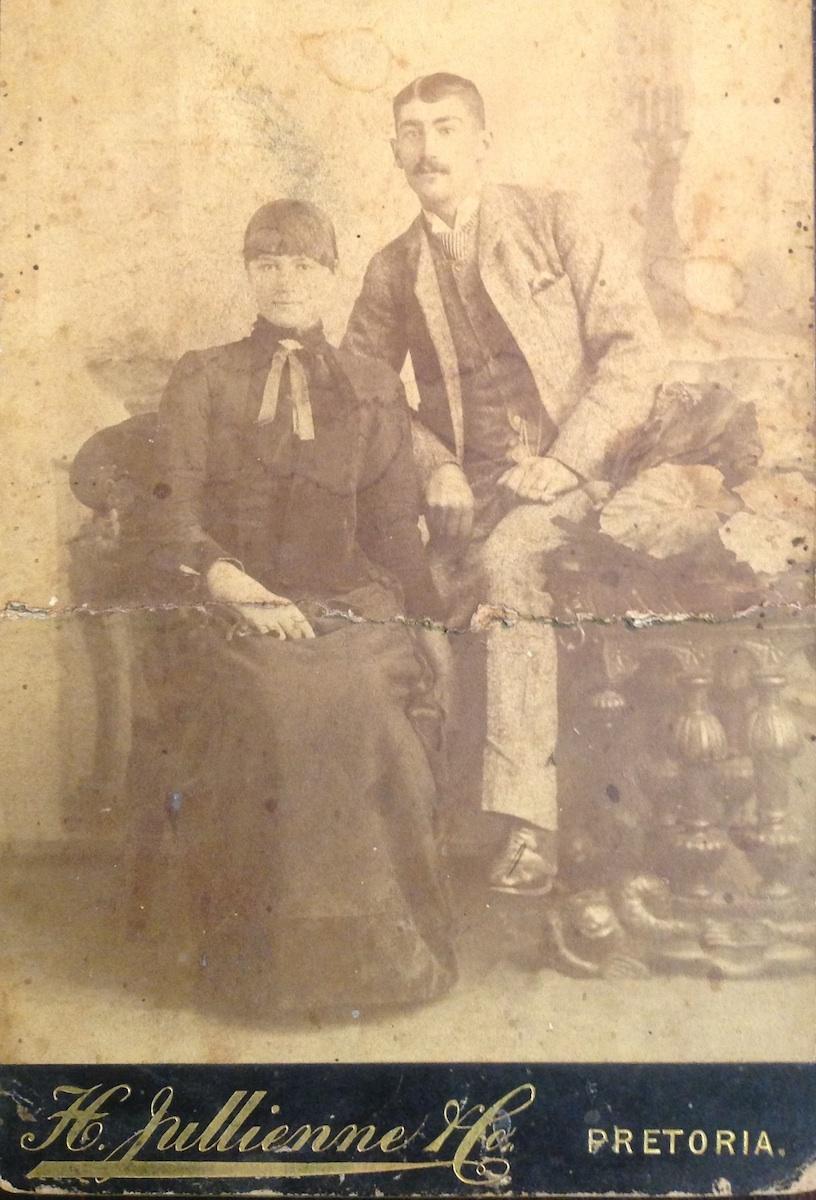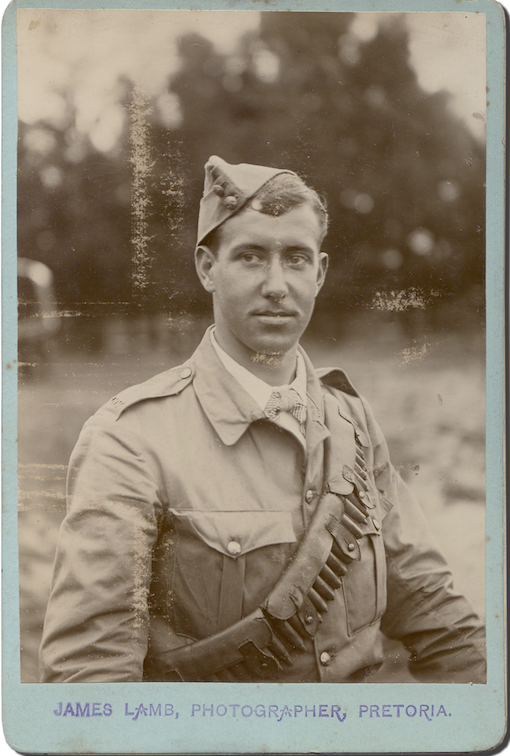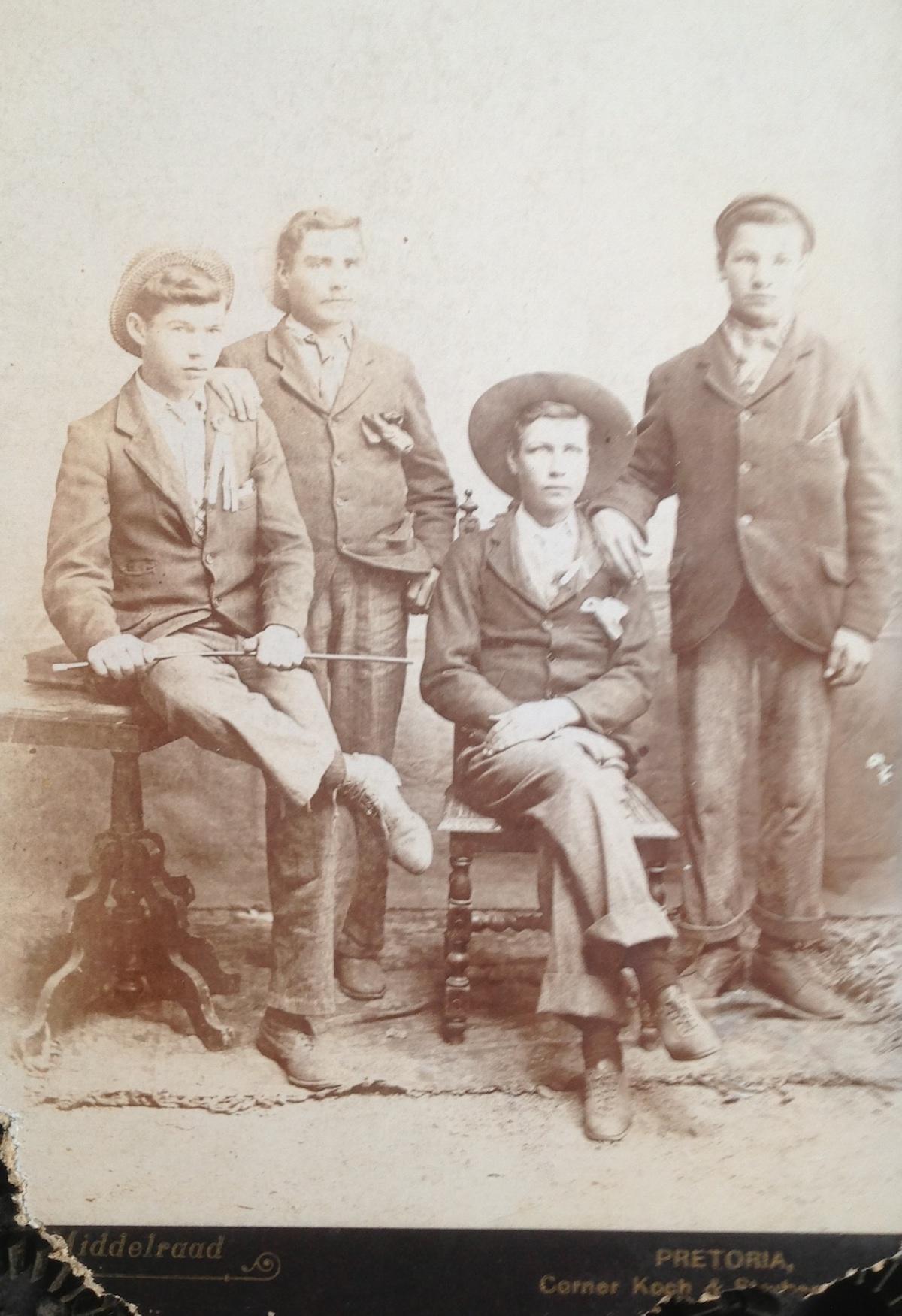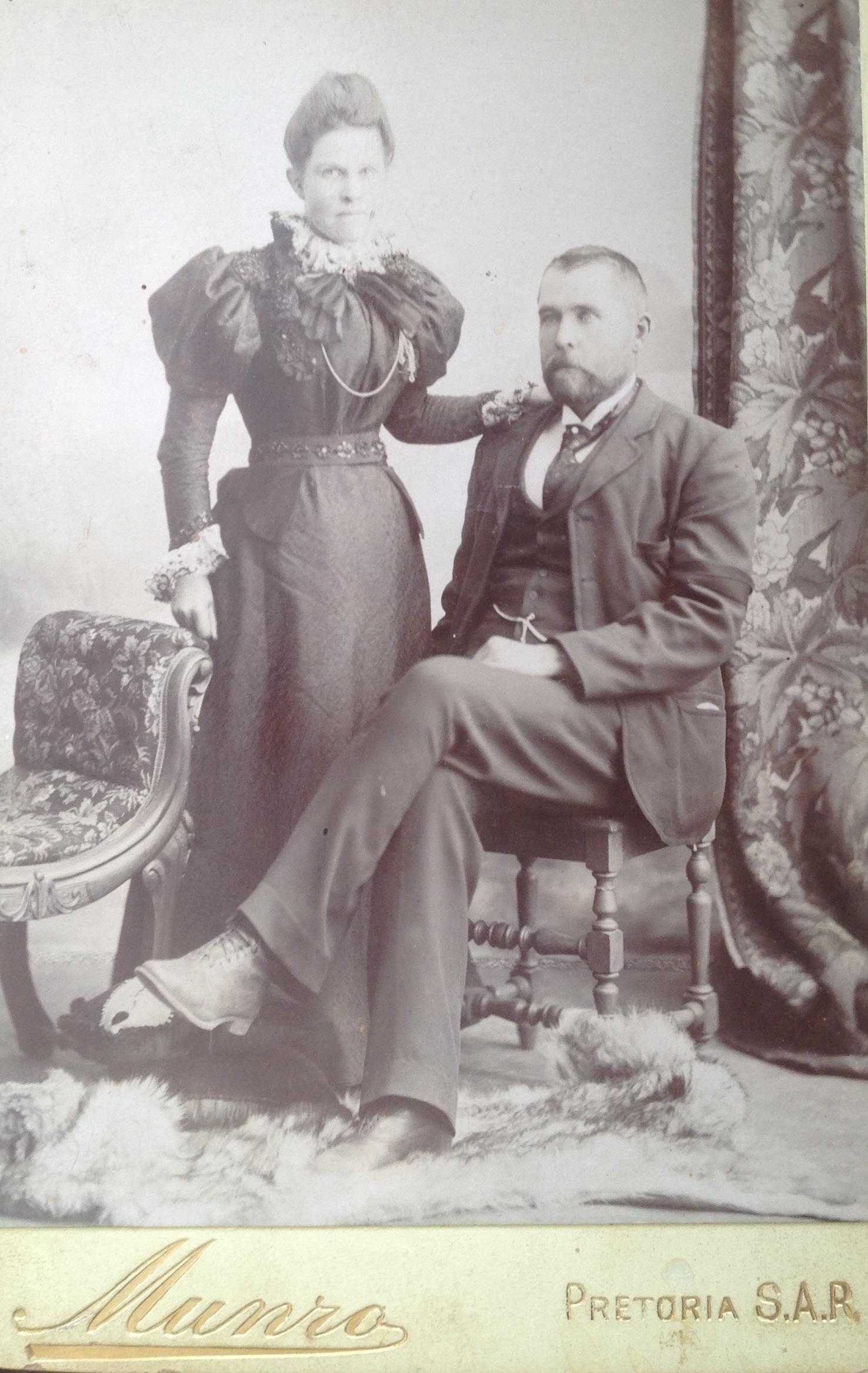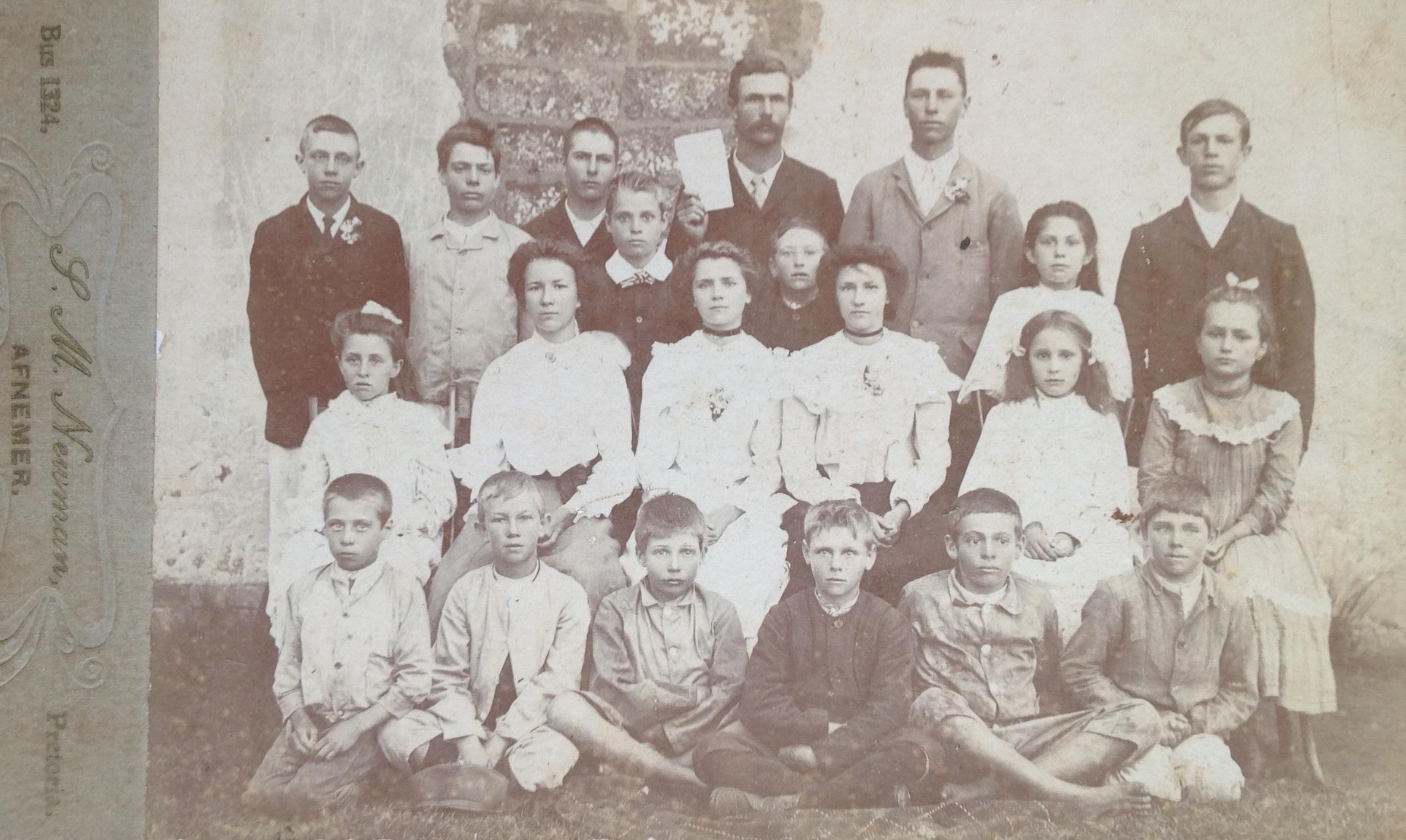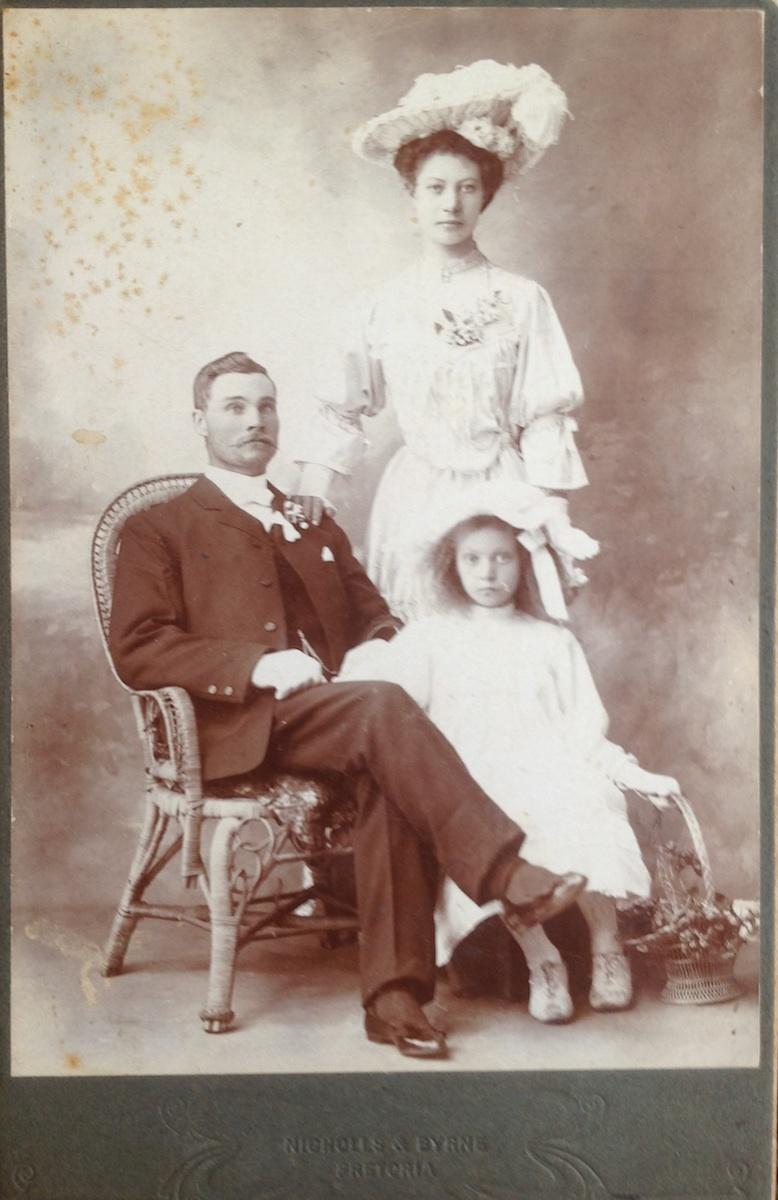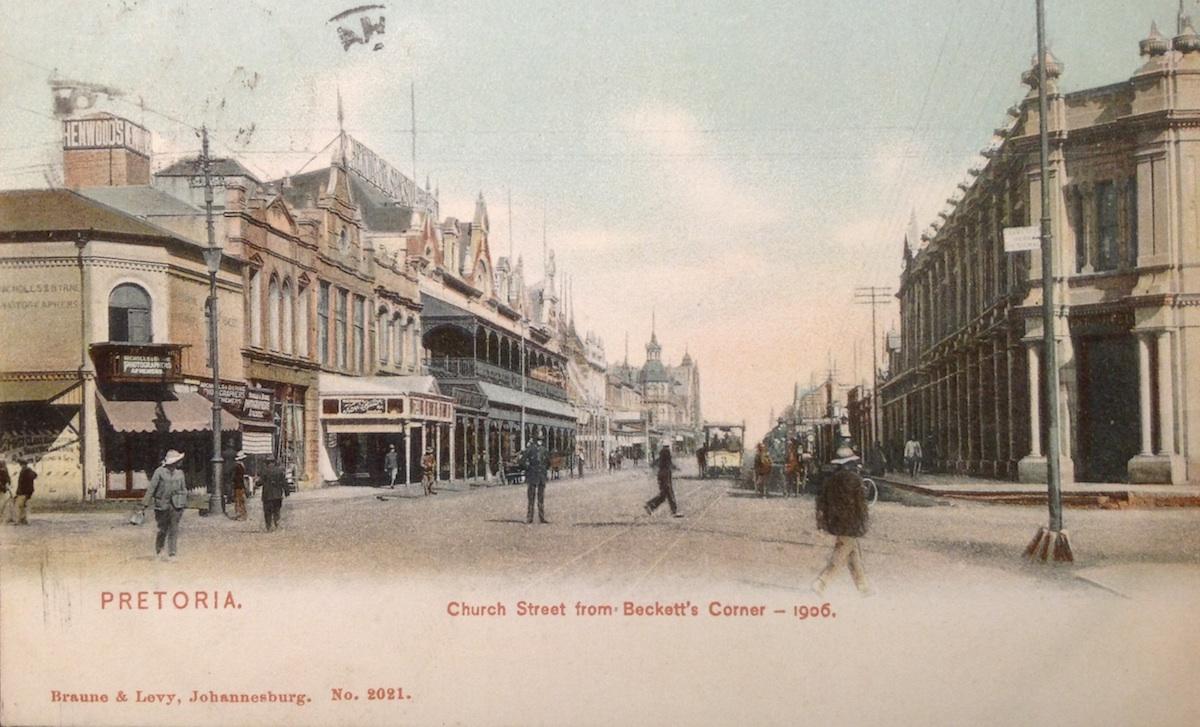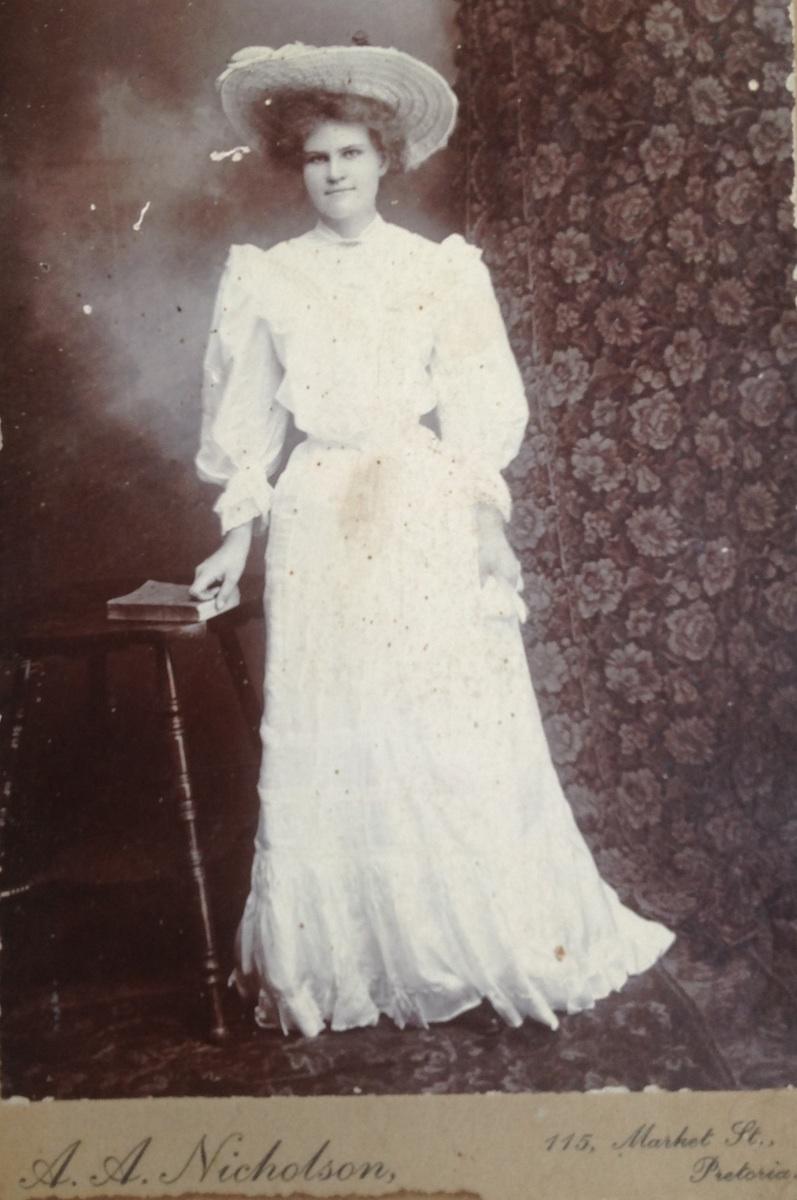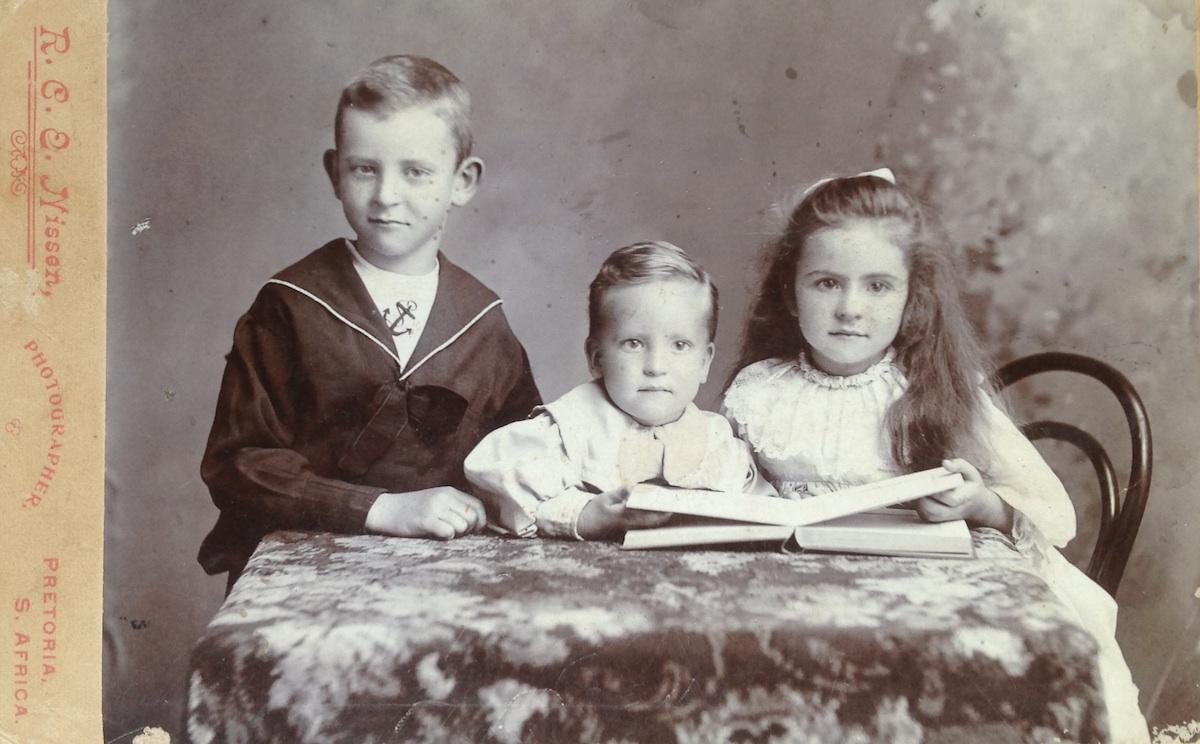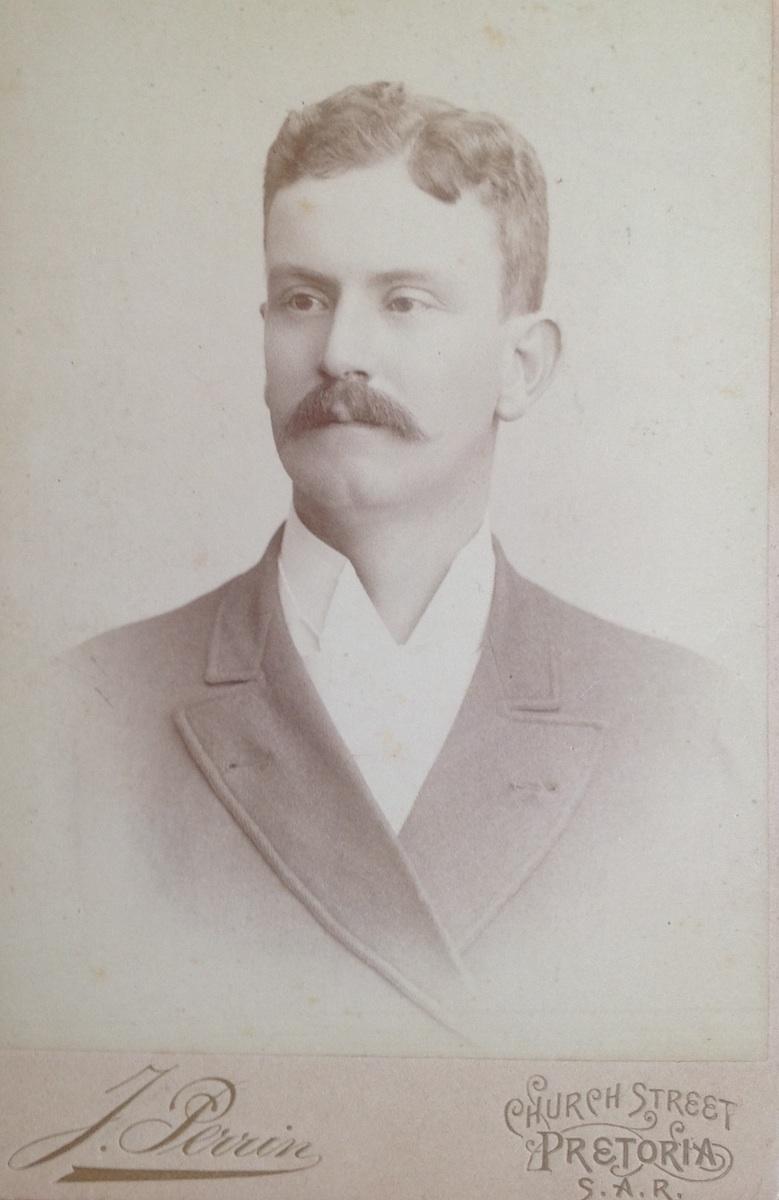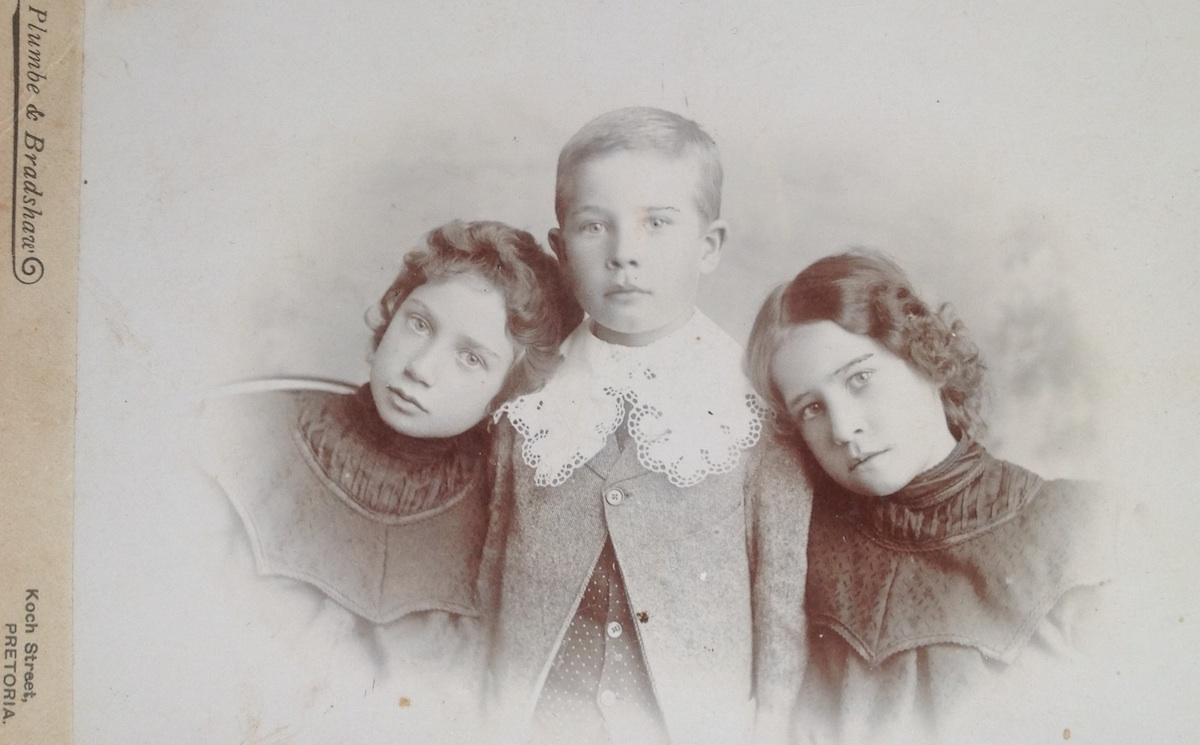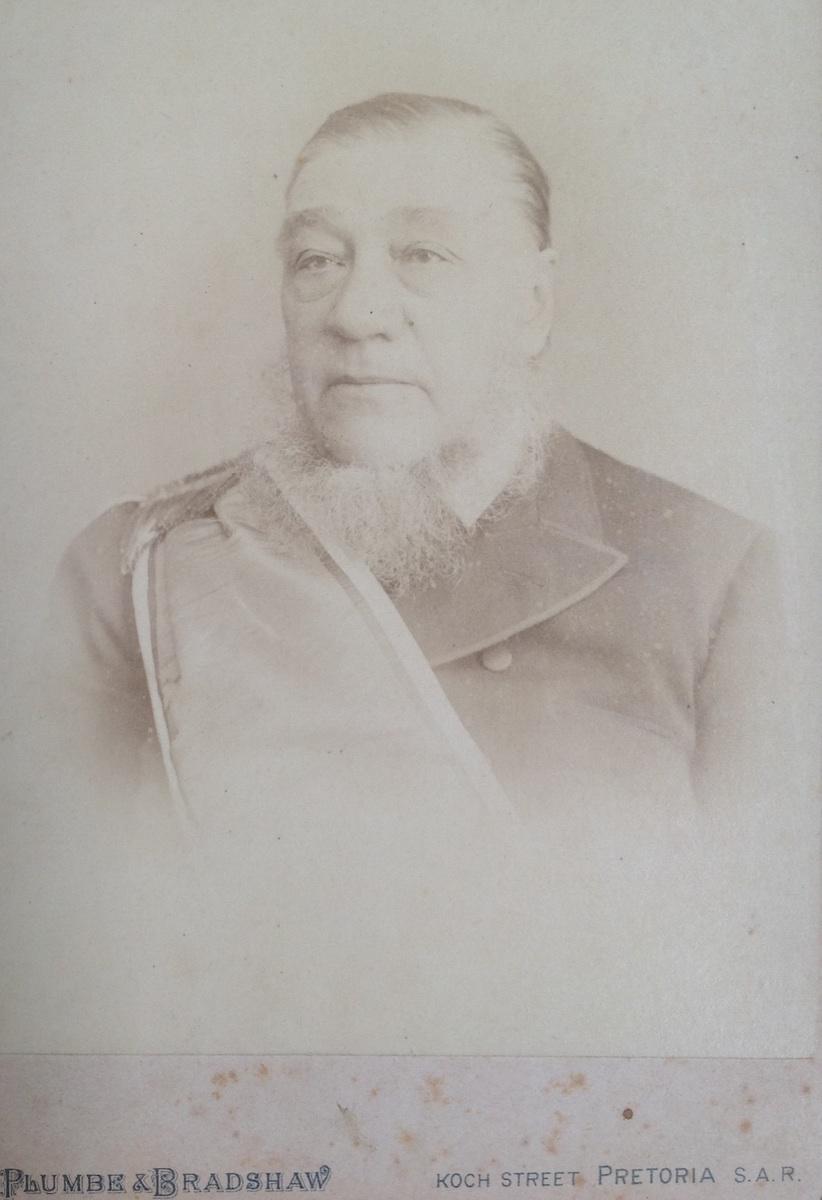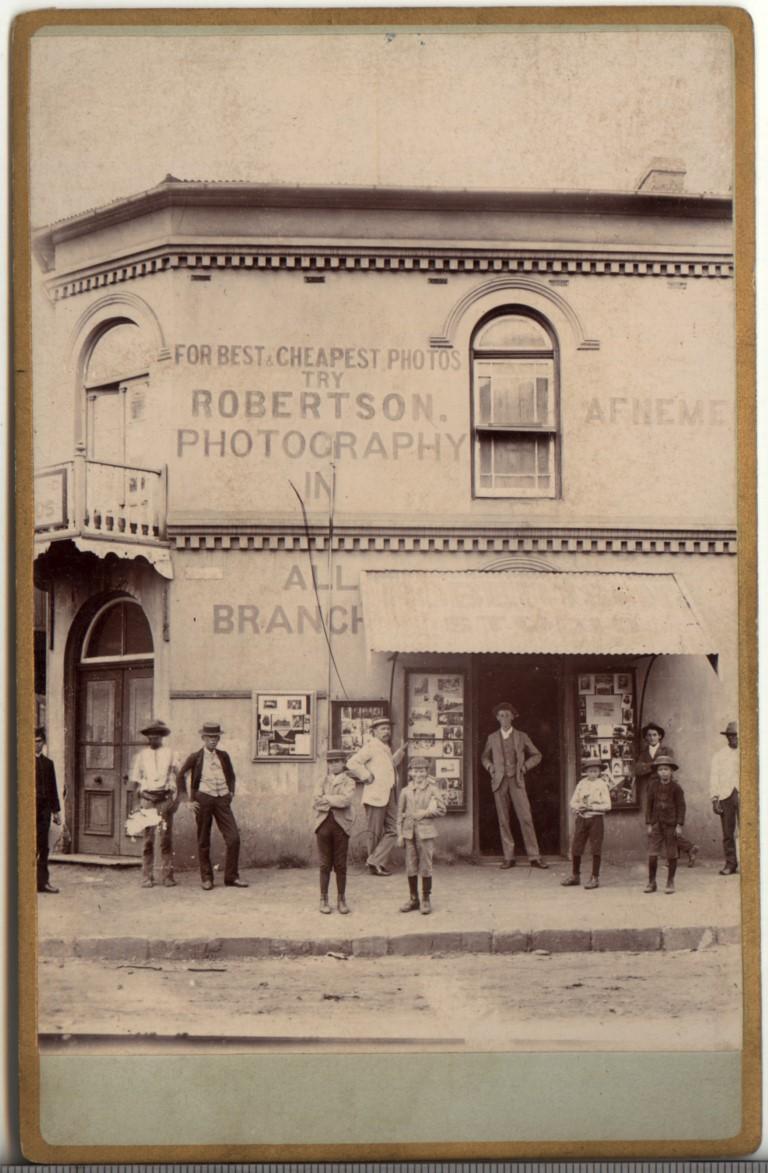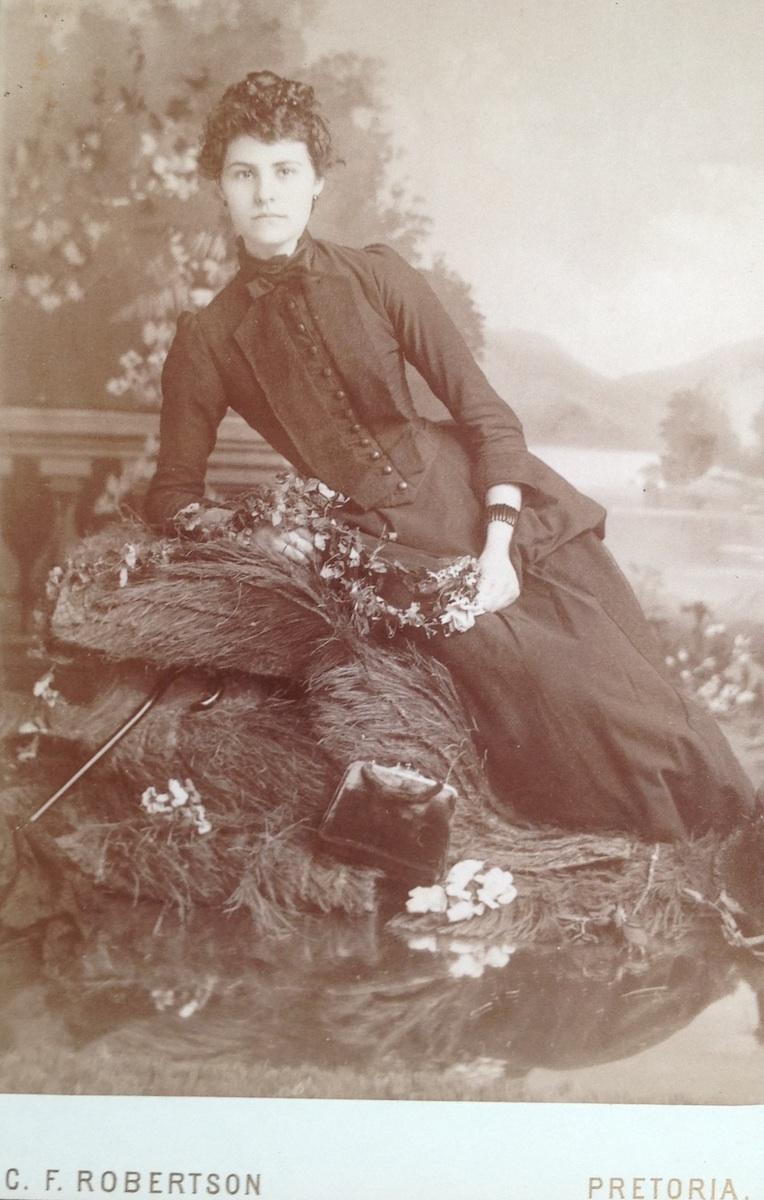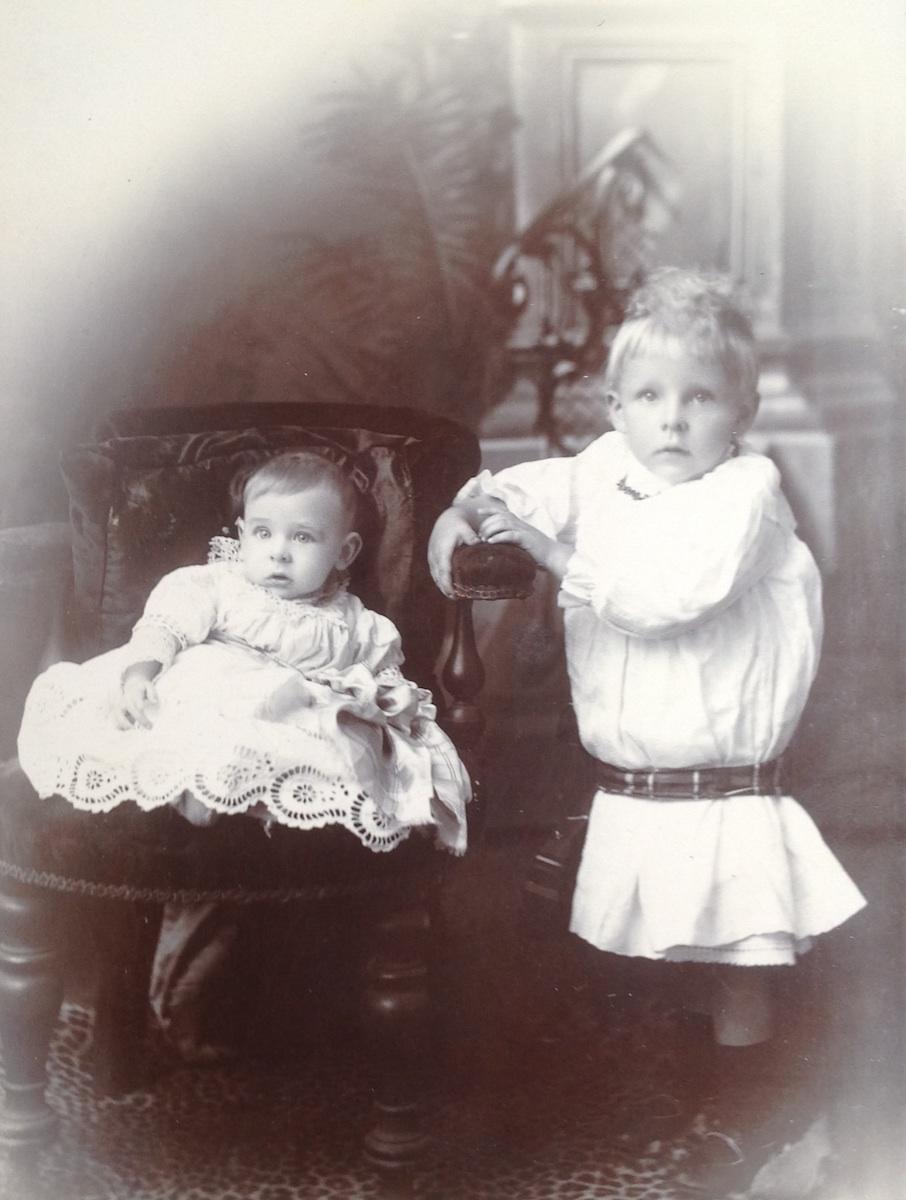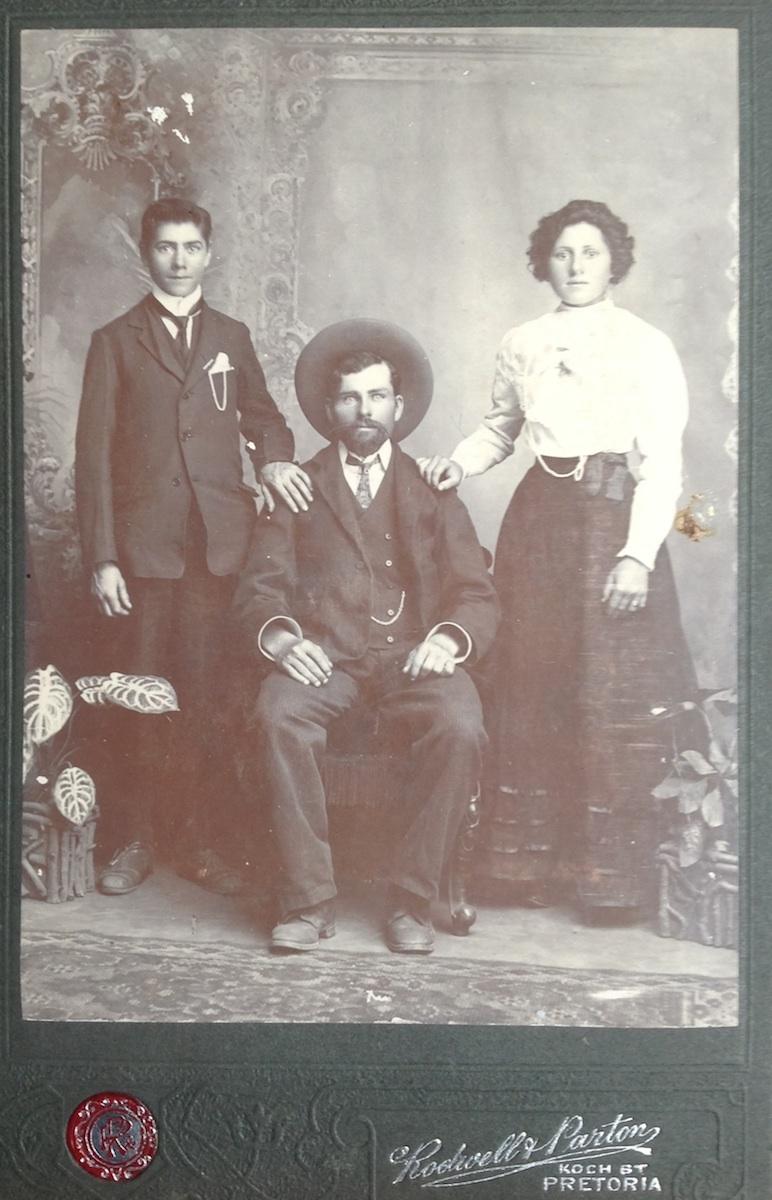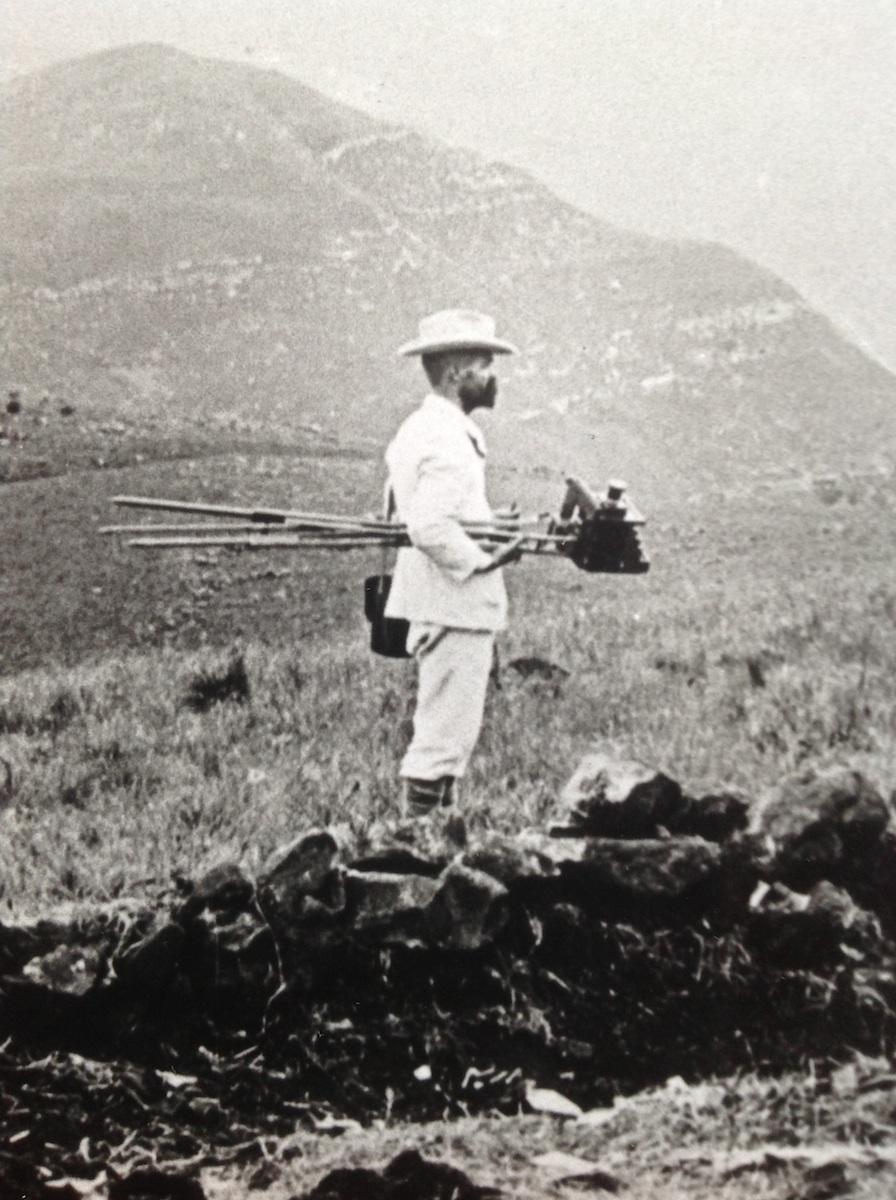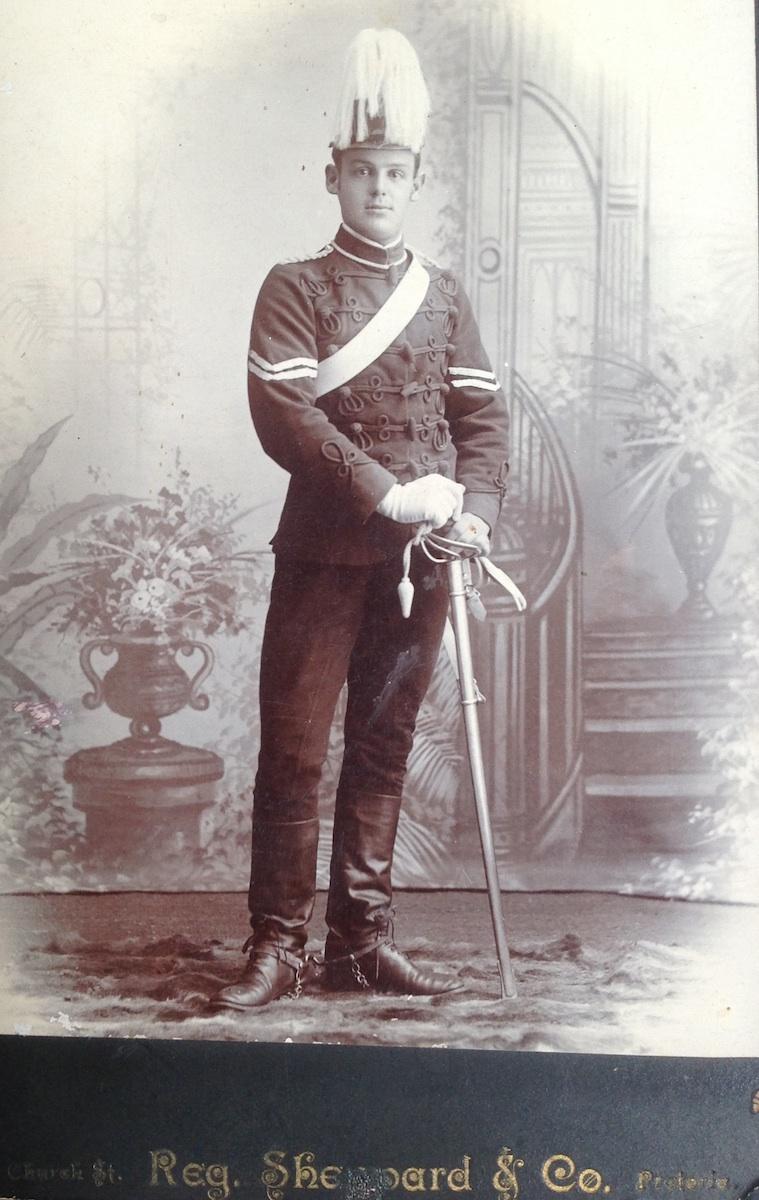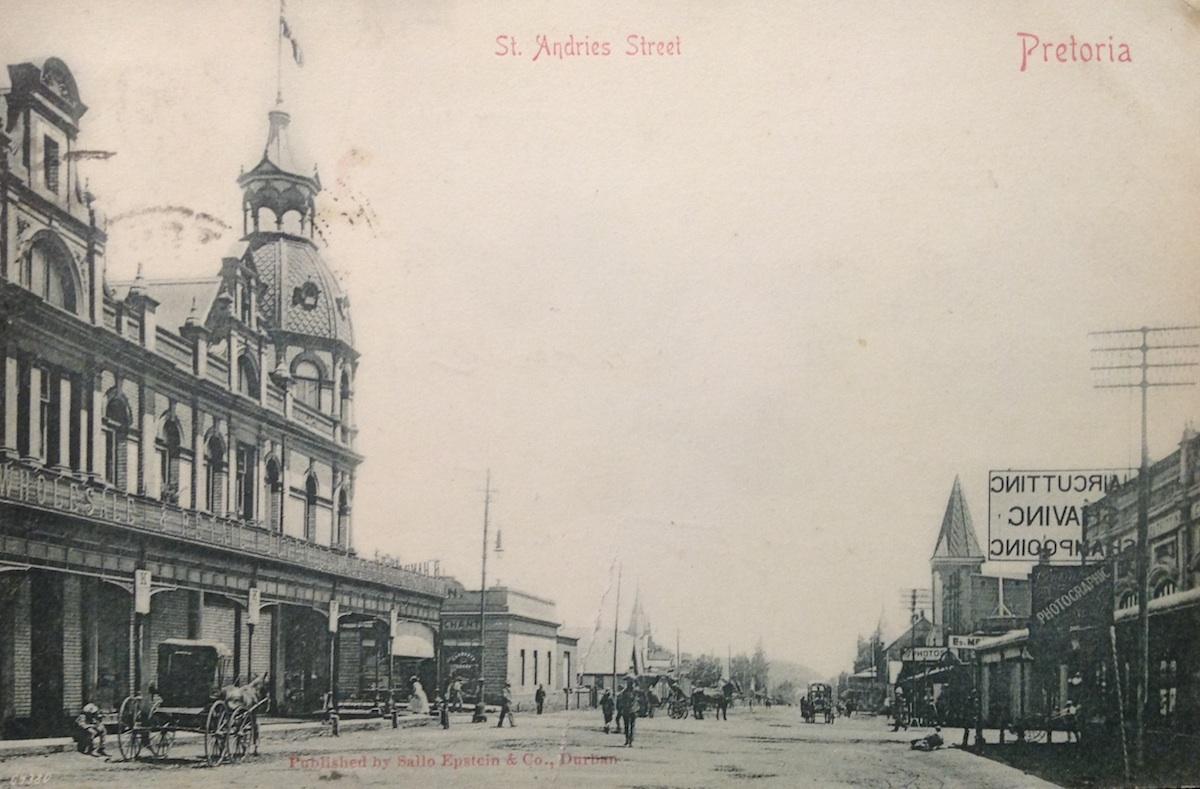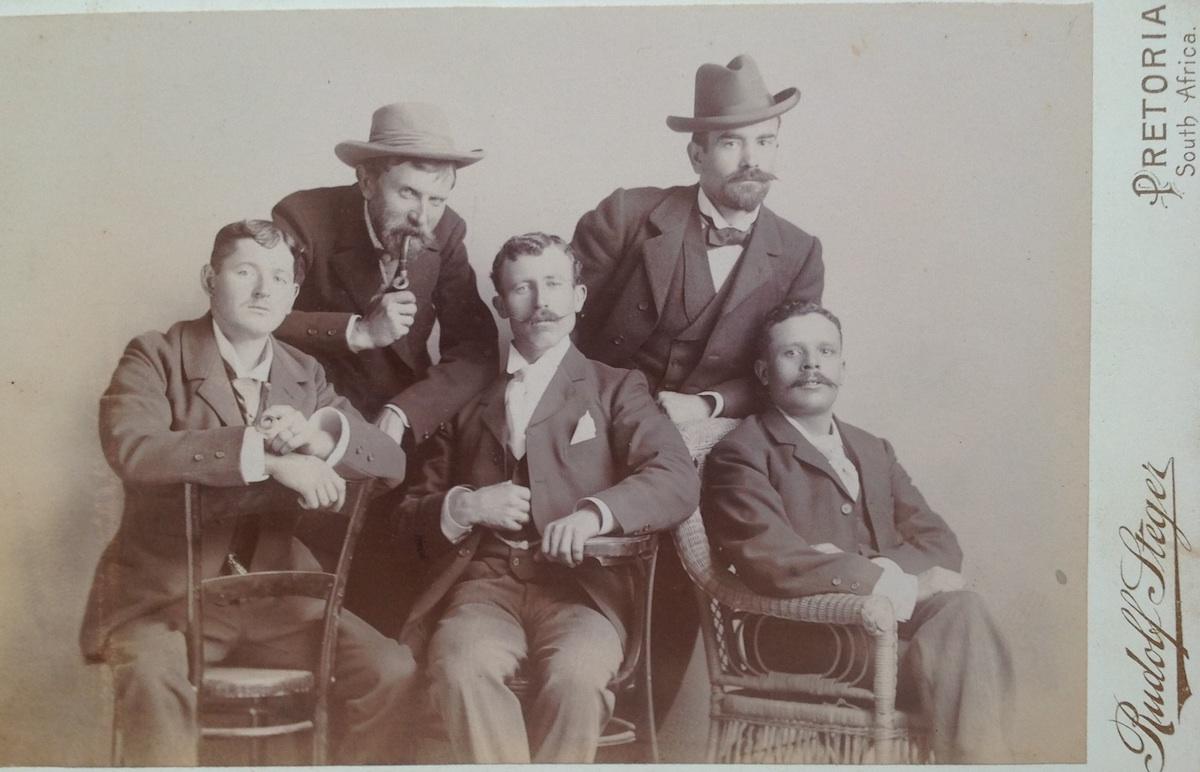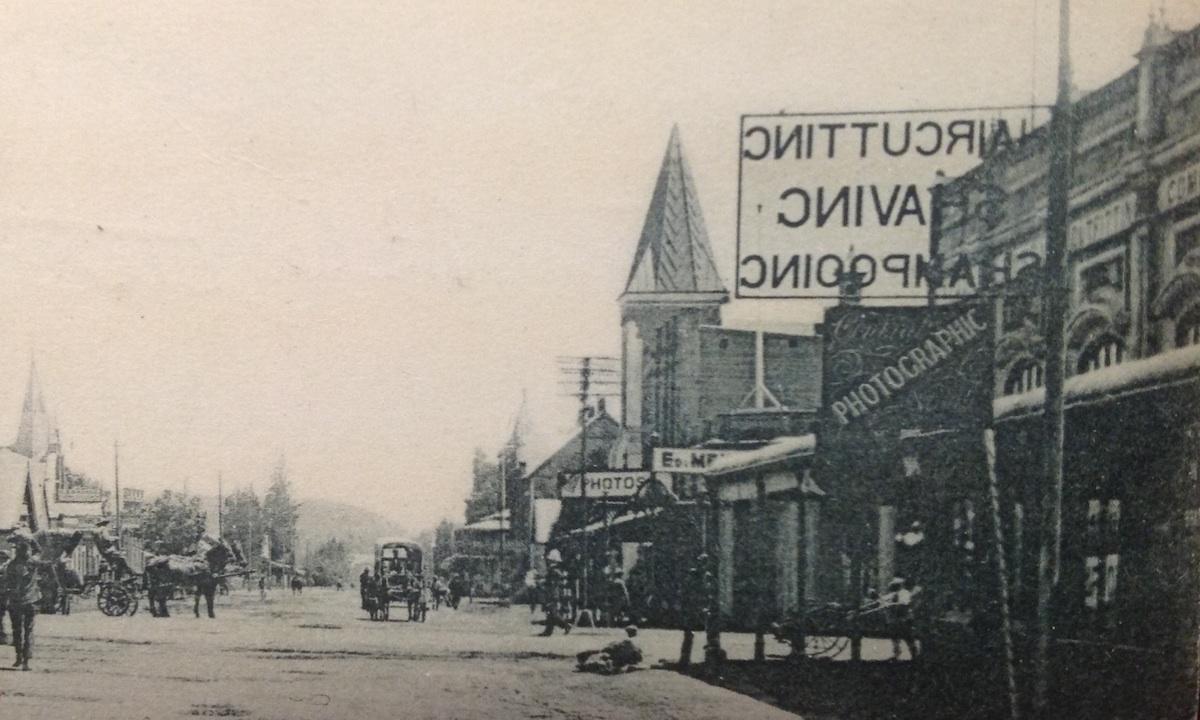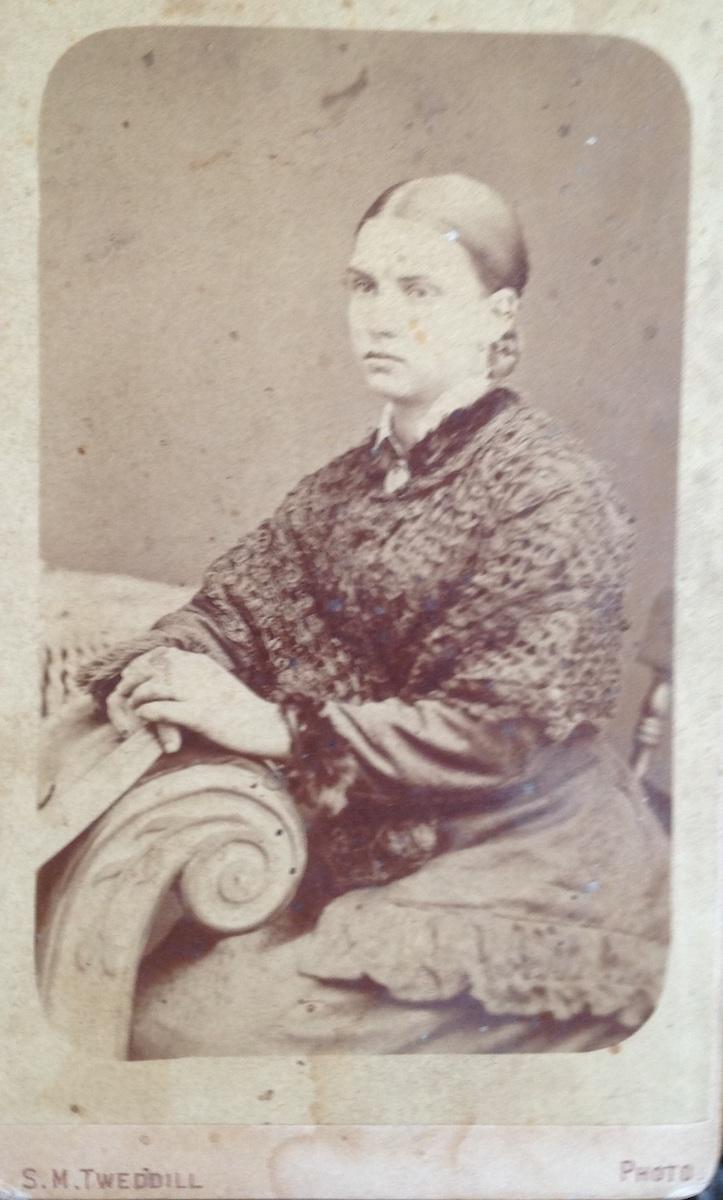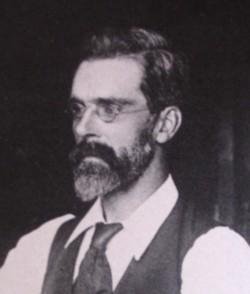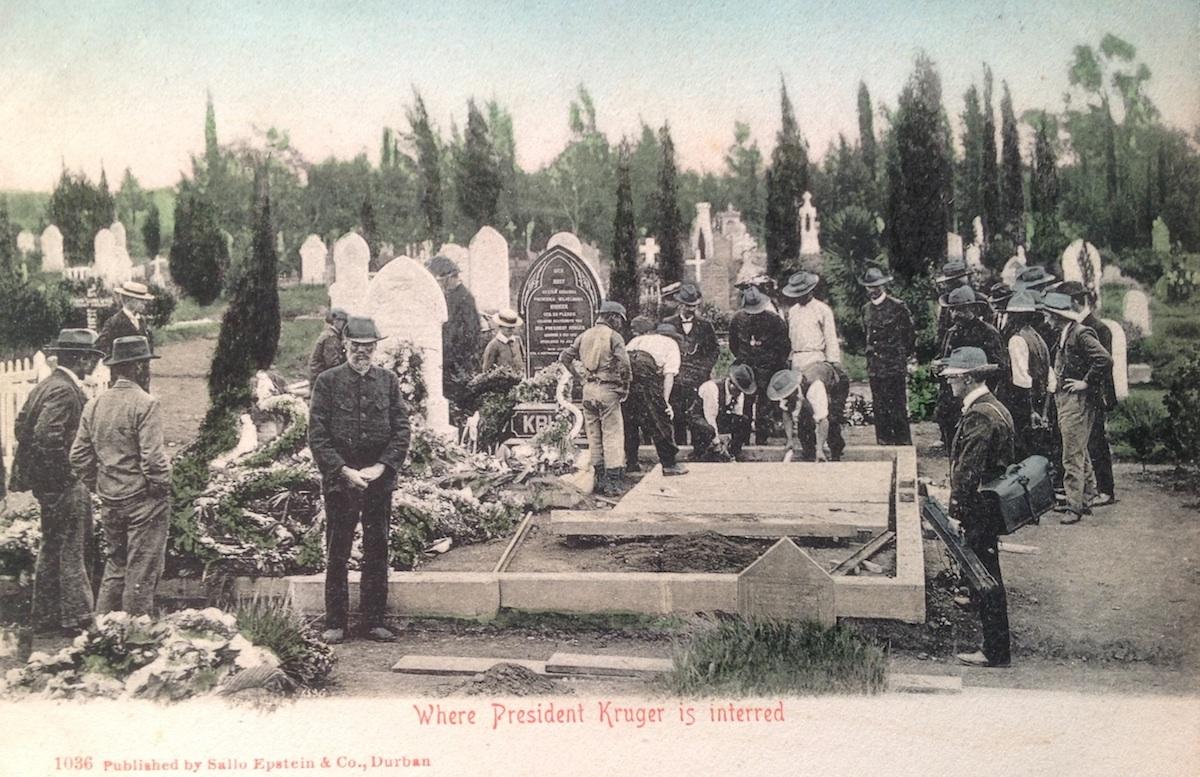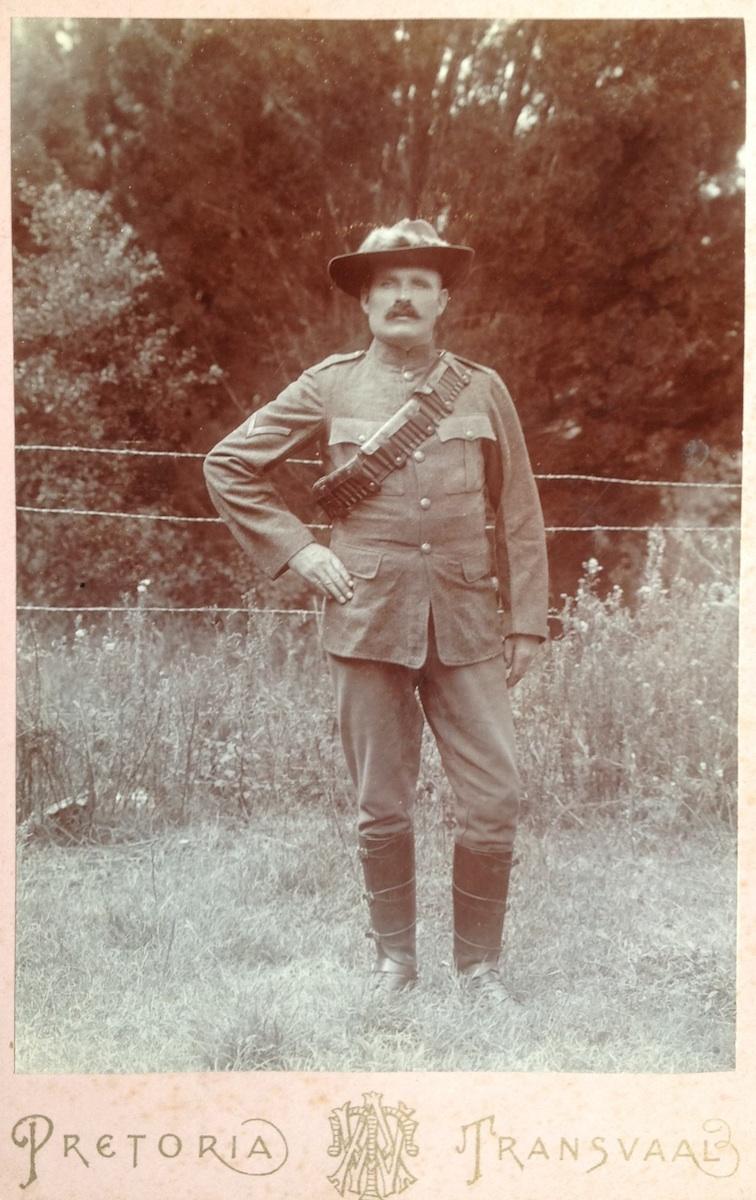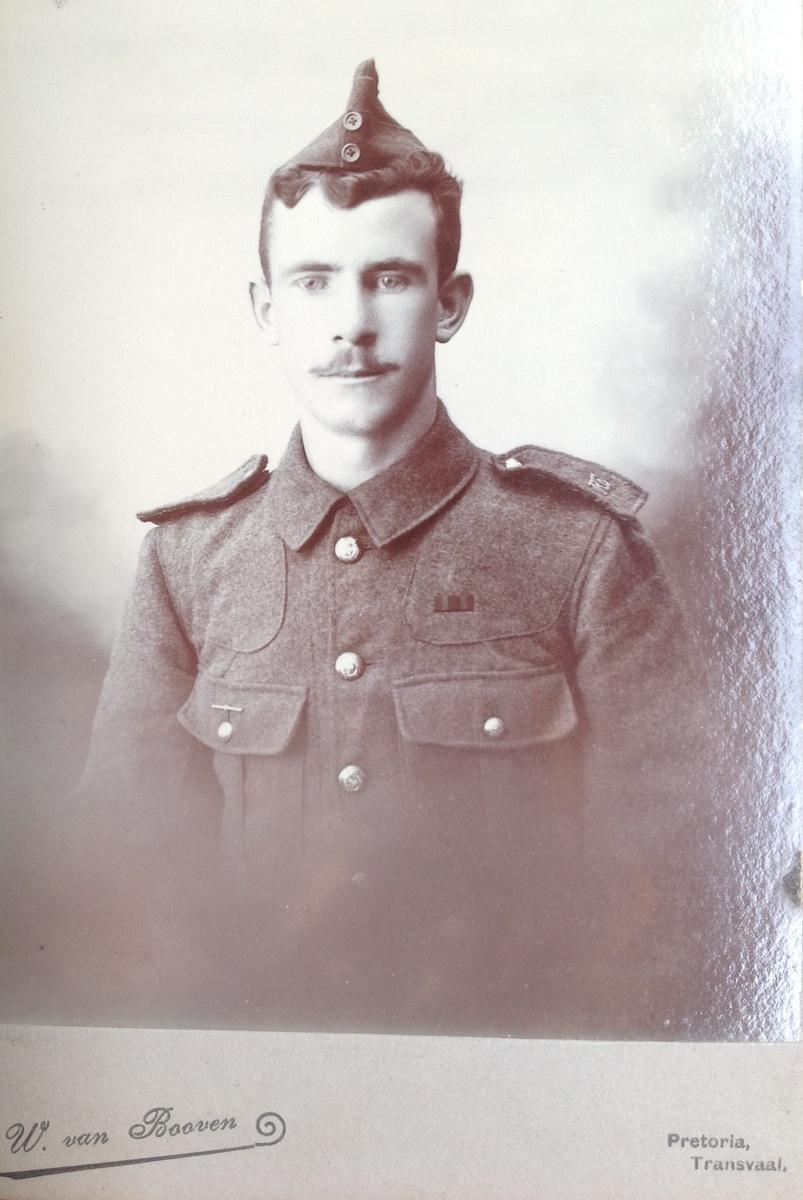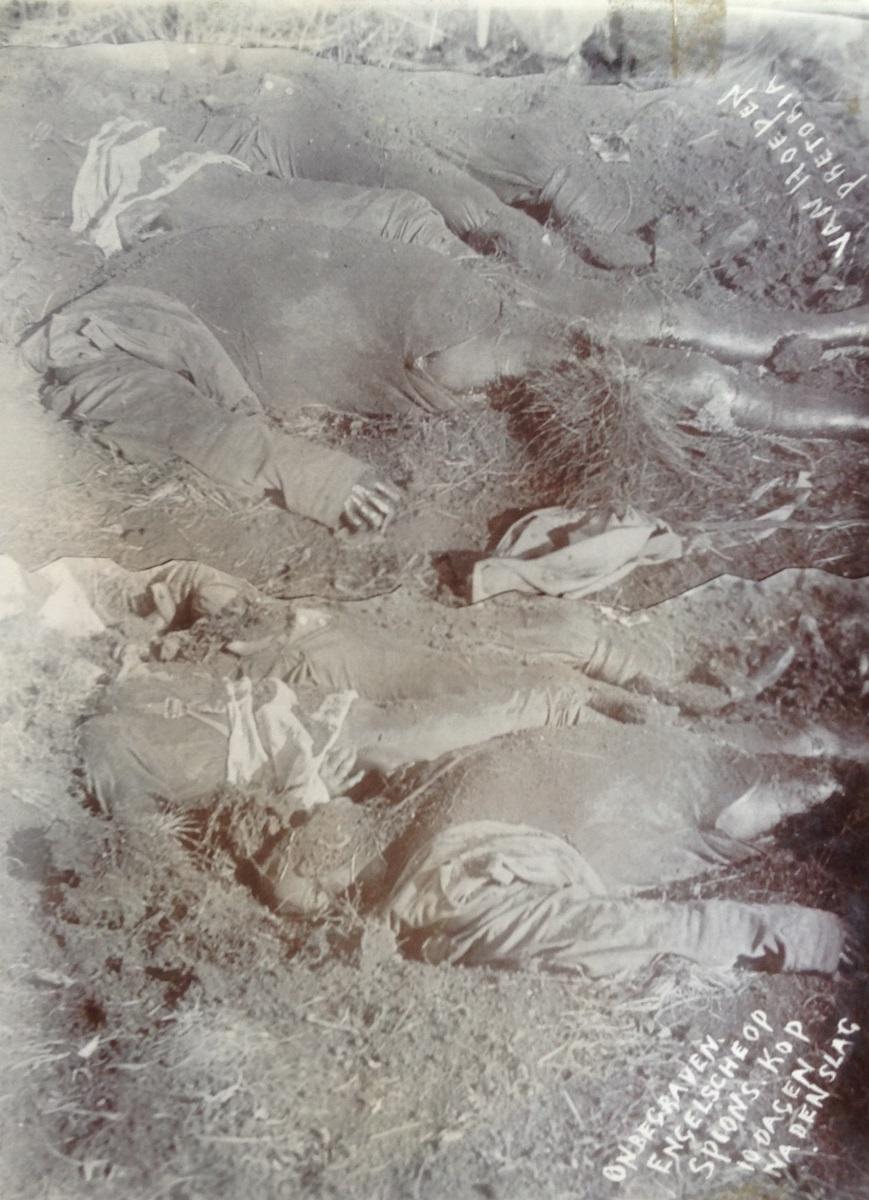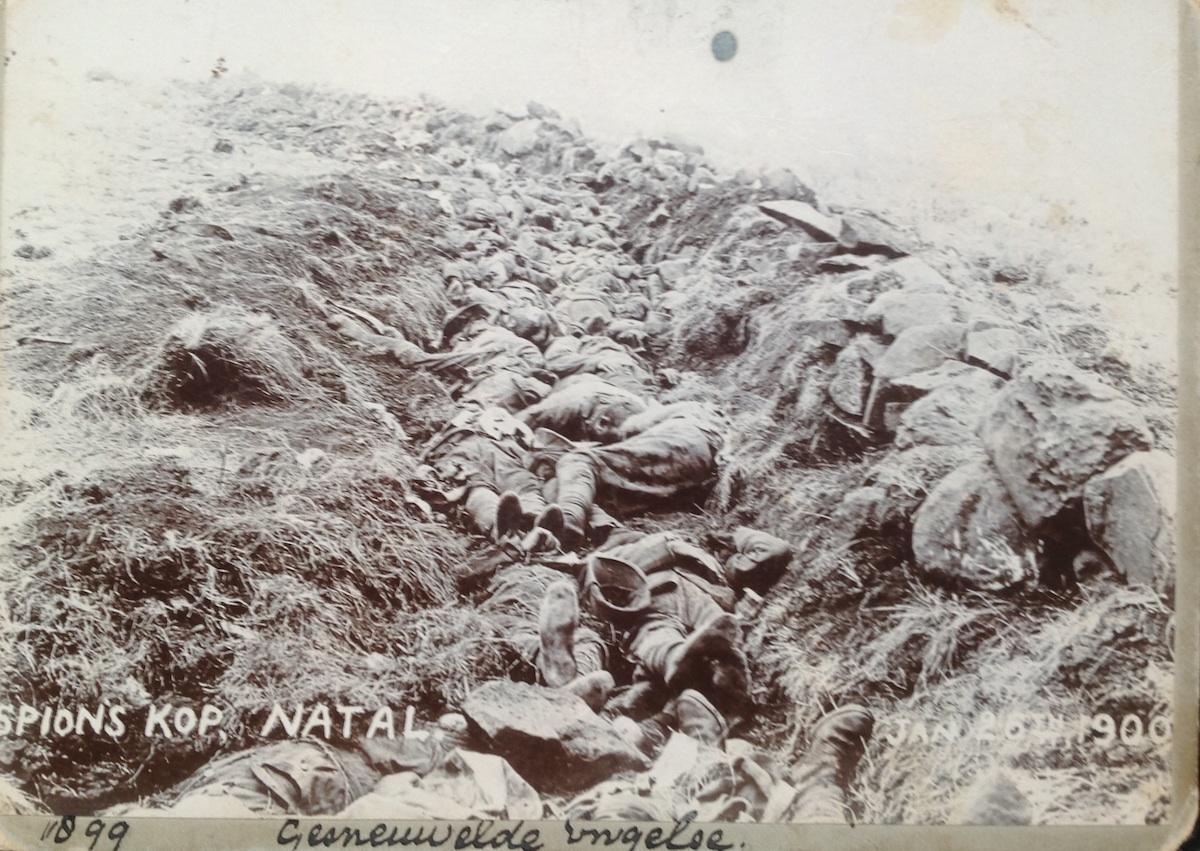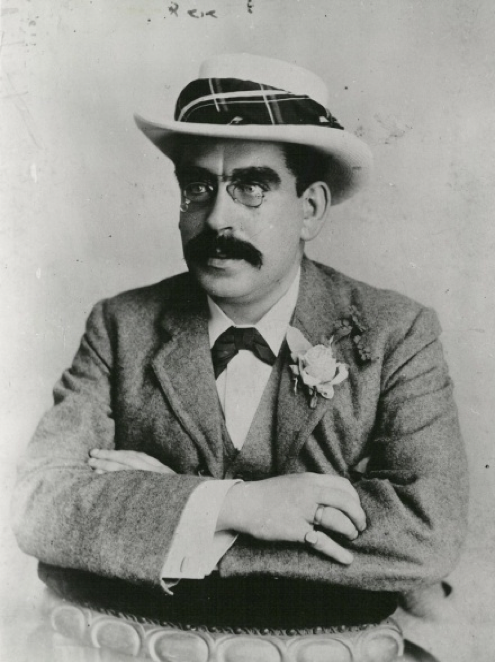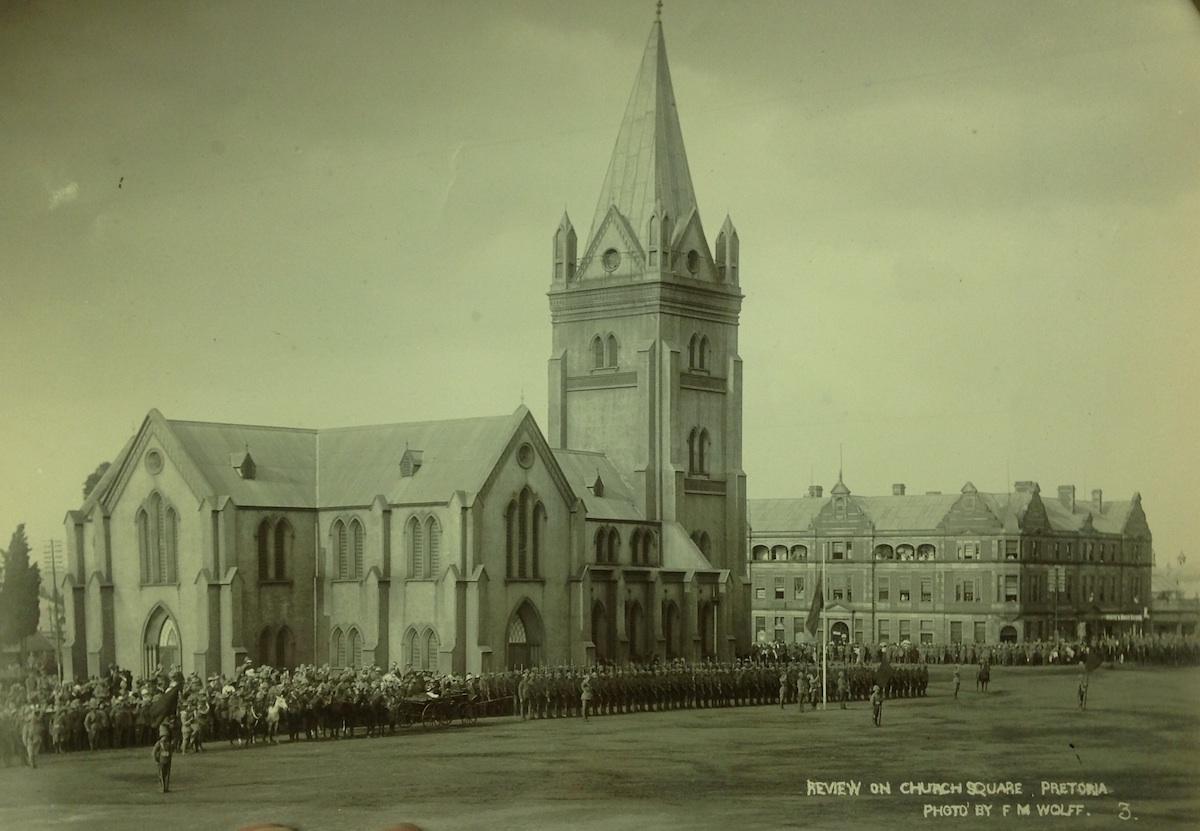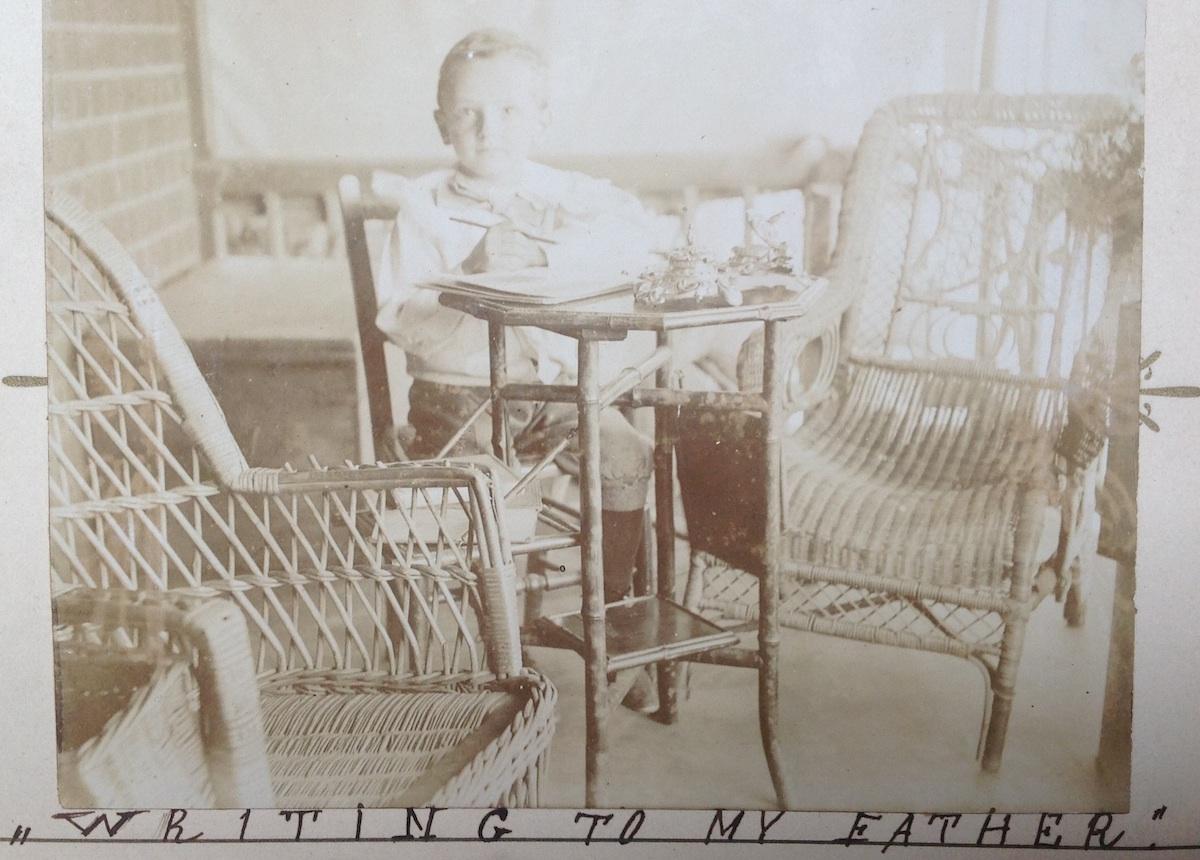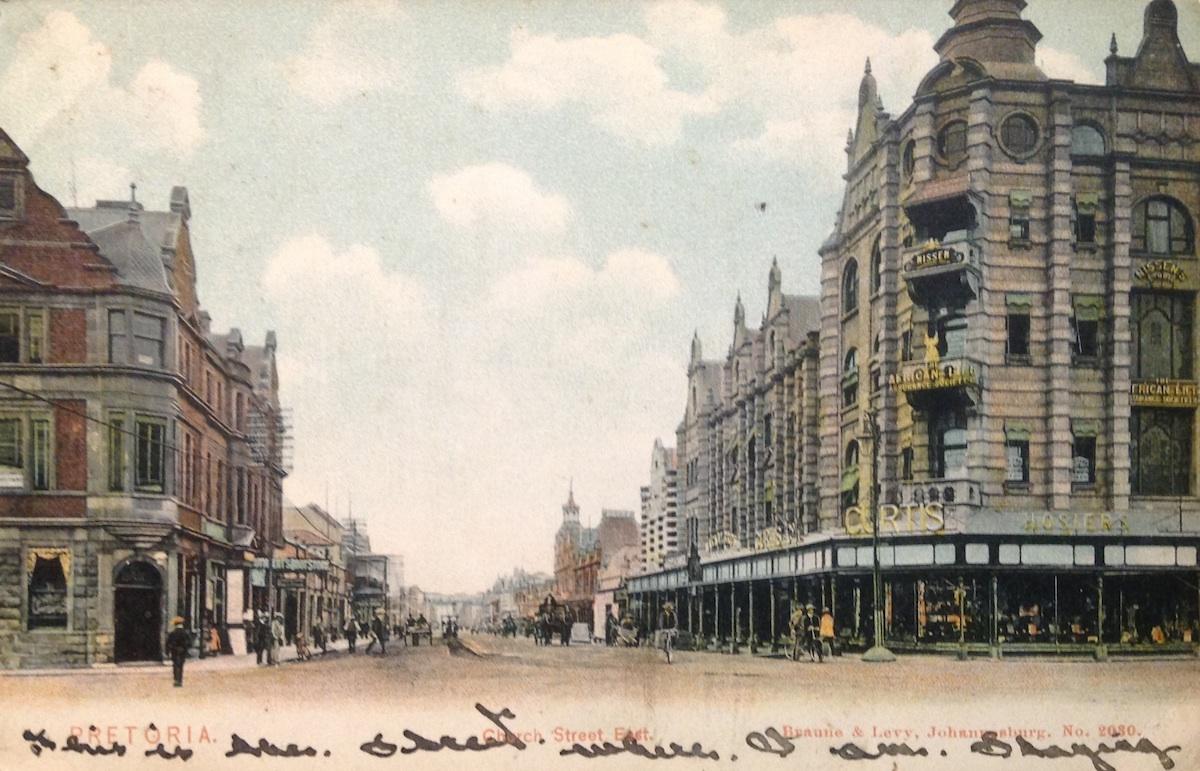
Disclaimer: Any views expressed by individuals and organisations are their own and do not in any way represent the views of The Heritage Portal. If you find any mistakes or historical inaccuracies, please contact the editor.
1. Introduction
During the early commercially embryonic era of photography, photographers from all over the world attempted to generate an income from this new art form. Many aspirational photographers arrived and settled in South Africa from countries such as Ireland, England, Australia, Switzerland, Holland, Latvia and Germany, to mention but a few.
About his experience in South Africa, one unknown photographer later stated the following in the London based The Photographic News on 16 November 1877: “If I am asked how I like South Africa, and answer truly, I say it is a most miserable, barren place, destitute of all comforts, and utterly unsuitable for Englishmen to live in; on the other hand, the people are genuinely kind and friendly. Money is easier made, and for a sober man, there is no fear of starving, as there is in England” (Africana Notes & News, 1972). It is assumed that the reference to money to be made, refers to photography as a profession.
The purpose of this article is to provide a register of photographers active in Pretoria between 1855 and 1915, with brief background information on each where available. It needs to be noted though that no photographic activity has been recorded during the first 15 years of Pretoria’s existence. Photographers only started showing interest in Pretoria from the 1870s onwards.
This register of photographers is by no means complete and refinement of the register will continue. Occasionally a photograph by a previously unidentified photographer may surface in private or museum collections or even in Victorian photo albums that may have survived.
Some photographers were in non-commercial and less visible roles such as the Pretoria central prison photographer Flatt, research entomologists or photographers for the printed media (post 1900). This aspect provided an additional challenge in identifying photographers in these types of roles, compared to their commercially focussed counterparts.
There were also photographers who did not feel the need to advertise in local papers, or print their names on photographs, which makes the identification of photographers even more challenging.
2. Brief history of photography in South Africa
South African photographic history is significantly younger compared to that of Europe and America.
The town of Pretoria, was only proclaimed in 1855, some 16 years after the Frenchman Louis Daguerre improved on his fellow Frenchman Niépce’s invention, namely the permanent photograph. Today, these permanent images, produced between 1839 and 1860, are commonly referred to as daguerreotypes. Niépce, in his early 60s during 1827, captured the first ever permanent image in the east of France. He passed away six years after this invention.
The first experimental photographs taken in South Africa were by a Cape observatory employee, Charles Smyth. Smyth achieved this a few months after Daguerre announced his invention.
The first professional photographer to settle in South Africa was the Frenchman MJ Leger who opened his studio in Port Elizabeth during 1846. Carel Sparmann opened his studio in Cape Town the following year (1847). During the early years of South African photography, most photographers either settled or started off in Cape Town or its immediate surroundings.
3. Photography in Pretoria
Without the extensive pictorial history created by Pretoria’s earlier photographers, the history of Pretoria and its people would have been dull and limited.
Whilst Henri Ferdinand Gros is recorded as the first photographer to have settled in Pretoria during 1875, photographer’s such as William Roe and Bernhard Mahler paid short visits to Pretoria during the early 1870s. After 1875, various photographers attempting to earn an income from photography, followed Gros to Pretoria.
Although the register of photographers below mainly contains details of photographers who established themselves in Pretoria over a longer term, it also includes a few photographers that took up temporary residence in Pretoria in order to photograph special events such as the two Anglo-Boer wars.
With Pretoria being the centre of the Anglo-Boer war, there was an increase in the number of photographers who tried their hand at photography in Pretoria from 1900 onwards. Not all achieved success, as some did not function as photographers for more than a year. Well established photographers, such as, amongst others, Munro, Nissen & Gilham clearly provided tough competition in what would have been a relatively limited market.
Photographs were produced in various formats. For this research, information was mainly obtained from original family photographs produced in Carte de Visite or Cabinet Card formats.
The Carte de Visite format was popular between 1865 and the late 1870s, followed by the even more popular Cabinet Card between late the 1870s and 1905. Often, photographers had their names and sometimes studio details imprinted on these photographs. It is this information that assists researchers in the photographer identification process.
The back of a carte-de-visite photograph by Tweddill (Circa 1880), the front of which appears under Tweddill below. Note that both Dutch and English appear on the card.
It has been a greater challenge to identify photographers not using the Carte de Visite and Cabinet Card formats. The list of Pretoria based photographers presented below may therefore be more complete for the period 1875 - 1900 than for the period 1900 - 1915. For the latter period, information was mainly obtained from old Pretoria directories. For many of these photographers, no original photographs have been seen or identified by the author.
An additional challenge during the research was the various spellings of some photographer surnames. Shepperd for example was also spelled Sheppard or Shephard. Spelling of the photographer Spangendaal’s surname also appeared as Spankendel or Spangethal.
After 1915 many more photographers settled in Pretoria – a research topic of its own.
4. Pretoria photographers
A few interesting snippets:
- For some photographers, photography was not the only source of income in that it is known that Mahler for example was a medical practitioner, Tweddill was an assistant museum curator whilst others followed careers as detectives, farmers, butchers, jewellery makers etc.
- Photographers also competed to record the image of president Paul Kruger. Those that succeeded in doing so include Mahler, Gros, Boeseken, Steger and Plumbe & Bradshaw;
- Some photographers managed their finances well, whilst others struggled to make ends meet;
- Some studios were popular for their location and were therefore in high demand, resulting in photographers taking over such prime located studios from each other at regular intervals. The most popular of all studios was the 220 Church street studio. According to Dunston (1975), this same studio was also occupied, at different stages by Bowers, Nissen, Munro (1906/08), Duffus Bros (1910) & Fred Coop (1911 – 1913). To date the author has not been able to locate a photograph that clearly shows this studio;
- Another popular studio was the Gros studio based on the corner of van der Walt and Church street. This studio was also occupied by photographers such as Robertson, Nicholls & Bryne and Munro.
Of the names listed below, some 68 are of individual photographers, 10 of photographic partnerships and 4 of news agencies/book dealers or picture framers. Some overlap does exist between these three categories.
4.1 Individuals, Partnerships & studios
Listed below are individual photographers and partnerships that were active in Pretoria between the early 1870s and 1915. Each name, where possible, includes the year of activity. These dates have been obtained from dated photographs, directories and newspaper advertisements.
As much information as possible is further included, such as country of origin and studio location.
Where only date and studio location is provided, no further information was available on the photographer.
For ease in cross-referencing, names of other Pretoria based photographers have been highlighted, where reference is made to them underneath another photographer in this register.
-
Ainsworth AM - 147 Church Street (1908)
-
American Novelty Photo - 435 Market Street (1911)
It is unknown which photographer was based at this studio.
-
Anson WH – 219 Proes street (1908)
Anson applied for a position as photographer at the Transvaal Agricultural department during 1910. He stated that he did work for the Transvaal Agricultural Journal and that he had 20 year’s experience as photographer for the Agricultural journal of the Union of South Africa. In this application, he also stated that he was skilled in micro photography.
During 1909, Anson offered the same agricultural department, where he applied for the position as photographer, magic lantern slides for lecturing purposes. Archival records indicate that he also produced multiple lantern slides for a JJ Nicholson and that he had done work for the Royal Institution of England before.
The South African National archives also holds an extensive quote provided by Anson to the company N & H Bricks for developing photographic plates, films, reproductions, enlargements, printing, postcards and producing of lantern slides.
-
Arundel W (South-end studio) - 156 Market Street (1903/04).
Also in partnership with Nicholson at some stage.
-
Austin JEJ - 22 Koch Street (1903/04).
It is assumed that this was John Edward John – Archival records suggest that he was a detective in later years. Austin passed away during June 1965 aged 90, which means he would have been in his early 30s when he was active as a photographer.
He married Sarah Ann Gower in England. She passed away during August 1950. They had two daughters Lilly and Iris.
-
Bernhard W - 87 Market Street (1903).
During 1884, Bernhard applied to become a burgher (citizen) of the Transvaal. He also unsuccessfully applied to become a Pretoria town inspector during 1895.
During May 1900, he applied for exemption from commando duty citing epididymitis (a male related condition), rheumatism and a heart condition as reasons for him being unable to participate during the Anglo-Boer war conflict. This request was granted.
The 1899 Longland’s Pretoria directory indicates that he was an agent to Mr F Eloff. It is not clear what this role would relate to.
-
Blaeser Cornelis Alidus (West-end studio) - 41 Bloed street (1904/1915)
Dutch born, Blaeser passed away in Pretoria during September 1943 aged 74. Although recorded as a detective at some stage in his life, his profession at the time of his death was recorded as a clerk.
It is not clear whether he shared the West-end studio with his fellow countryman Wolswijk, who was also based there, or whether one party took over the studio from the other.
Cabinet card format photograph by Blaeser of J.E. Boshof – The young lady clearly wore a very tight fitting corset. Taken during 1904.
-
Blaettler August – 179 Koch street (1906) and later 320 Servaas street – Pretoria West
Blaettler was Swiss born and retired as a photographer.
Prior to Blaettler settling in Heidelberg Transvaal during 1897, he was in London for 9 months, followed by a short 6-month stint in Cape Town.
During March 1903, aged 26, Blaettler married Berta Crescenzia Gobs in Durban. They had one daughter Ida who later married a Wolmarans. Blaettler signed his South African naturalisation documents during November 1906.
Ironically, his wife second wife Magdalena Elizabeth du Toit, claimed conjugal rights linked with a malicious desertion application to the courts during 1933, this after August seemingly left Heidelberg during 1919, never to return to her.
He was almost 72 at the time of his death in Pretoria (October 1948). The number of properties left in his estate suggests that he did well as a photographer.
It is not clear whether the C. Blaettler who was also based at Heidelberg was August’s father, brother or son.
Real Photo postcard by Blaettler of an unknown lady – Circa 1915
One image out of a portfolio of photographs by Blaettler of a family house (external and internal) – Circa 1915
-
Boeseken Adriaan Cornelis – St. Andries Street/Boom street (1891/1894).
Born in Rotterdam during 1871, Boeseken became a Transvaal burgher (citizen) during 1896.
He married Jantina Eelbredina de Kock. Their only daughter, Anna, who was born in Pretoria during October 1905, became a highly acclaimed South African historian and academic.
During the Anglo-Boer war, Boeseken was captured at Crocodile river (exactly where is not clear) and held as a prisoner of war at the Trichinopoly (India) prisoner of war camp.
In later years, Boeseken became a manager at the Nederlandsche Bank at the Bloemfontein branch followed by the Cape Town branch.
The South African National archives holds a photograph of Paul Kruger taken by Boeseken.
Given the information above, it is assumed that Boeseken was only active as a photographer in his younger years until the time of his capture during the Anglo-Boer war.
Boeseken died in Cape Town during 1942.
-
Bowers John NO - 220 Church Street (from around 1898 until shortly after the Boer War) and 130 Church street east thereafter.
Bowers resided at 752 Schoeman street.
Communication during 1901, from another Pretoria based photographer, Hutchinson, confirms that Boyd assisted Bowers in his Pretoria studio. Bowers and Boyd were also active in Johannesburg.
Nissen took over the studio based at 130 Church street during 1904.
Cabinet format photograph by Bowers of young Stoffel du Toit. Note the Victorian photo album in the foreground – Circa 1905
Cabinet format photograph by Bowers of an unknown young child. Circa 1905
-
Bowers & Boyd
It is known that they visited Bloemfontein for 30 days during 1892. Although Australian, they referred to themselves as American photo artists. They were also active in Johannesburg.
Other than the existence of photographs taken by them in Pretoria, no further information is available on them.
Cabinet format photograph of Willie van Manen - by Bowers and Boyd. Circa 1899
-
Bradshaw Samuel Charles - 51 Koch Street (1891/1904)
Originally from England and son to Samuel Coleman Bradshaw and Elizabeth (born Negus).
Bradshaw was active in Bloemfontein during the late 1880s and early 1890s.
He later moved to Pretoria where he went into partnership with Plumbe. Bradshaw went on his own again after Plumbe retired during 1893.
Samuel Charles Bradshaw advertised that he was the photographer at the late Plumbe and Bradshaw in Koch street.
Bradshaw left Pretoria during the second Anglo-Boer war hostilities. During 1901 he asked the military authorities whether he could return to Pretoria. The investigation that followed to consider his request revealed that he took over the Plumbe and Bradshaw business 3 years prior and that this was a thriving business at the time he had to leave. Tweedale (which is probably Tweddill) confirmed to the investigator that he let the studio in Koch street to Bradshaw and that he was an upstanding citizen.
Both Tweddill and Rodwell, who were also active as photographers in Pretoria, seem to have been personal friends to Bradshaw. Rodwell took over the studio at 51 Koch after Bradshaw’s death during 1904.
Neil Lamont is also recorded as a partner in this studio. In his last will and testament, Samuel Charles Bradshaw states: “As a legacy, I hereby declare to grant Neil Lamont of Pretoria partner in the firm Plumbe and Bradshaw all my shares in the assets including stock, money in hand and outstanding accounts which shall or may accrue to me (SC Bradshaw) in the above firm of Plumbe and Bradshaw, provided and with the express stipulation that the Neil Lamont shall pay all debts and liabilities of the said firm Plumbe and Bradshaw.”
At the time of Bradshaw’s death, W.E. Burmester & Co filed a claim against his estate, further confirming a strong photographic link.
At the time of his death, archival records suggest that he had three sisters, namely Clara Beatrice, Evelyn Jessie & Hilda Grace.
Photograph of SC Bradshaw (reproduced from Dunston, 1975, page 182)
-
Bradshaw William James
Descendants of William James are adamant that it was William James that was the partner in the Plumbe & Bradshaw firm. Given the information on Samuel Charles above, the author is however comfortable that Samuel Charles was the partner and not William James.
The possibility however exists that William James was also active as photographer in Pretoria, yet no further evidence was found to confirm such.
William James was the son of a London based photographer William Stephen Bradshaw. According to his descendants, William James Bradshaw (Born August 1859 in Shoreditch) travelled on the SS Spartan to Durban where he disembarked on 19 December 1887 and arrived in Pretoria on 28 January 1888. He was back in England by 1901 where he died in 1921. He was not married.
What confuses researchers is that William Stephen (father to William James) makes mention in a publication that W.S. Bradshaw and Sons had branch studios in the Sussex seaside resort of Hastings and in Pretoria, South Africa. His older son was running the Hastings branch studio resulting in some deducing that William James managed the Pretoria studio.
William Stephen seemingly also owned some sort of property in South Africa because he corresponded about title deeds (during the Jameson Raid in Jan 1896) with a Geo Leith - Agent at Law, Conveyancer and Sworn Translator based at 3 Erasmus Buildings Bureau Street in Pretoria.
-
Brittain Thomas
In an unsuccessful job application during 1905 to become the prison photographer, Brittain stated that he had worked in New South Wales, the South African Commissioner of Police and Central Johannesburg District (CJD) before. Although Johannesburg/Troyeville based, he was seemingly also active in Pretoria.
Brittain has been described as “the special photographer” to The Transvaal Leader weekly edition.
-
Brittlebank SC – Initially at 201 Church Street, Market Building (1903) and then his own studio at 468 Church street (1908).
He either took over the studio from Steger, or shared a studio with Steger.
The only identified cabinet format photograph by Brittlebank to date – Circa 1900
-
Brittlebank A – 468 Church street (1908). Also active in Kimberley.
In a publication Photographing the invisible, the author (Coates) refers to Brittlebank providing him with a psychograph (writing by soul or psychic power) for this same publication. It is alleged that the psychograph came about at a séance held in Pretoria on 21 December 1908, during which the spirit of Signor Ricci drew his own picture.
-
Brown, Flavell – No information (1889)
-
Byrne S - 208 Andries street (prior to 1908)
Byrne broke away from Nicholls in 1908 and opened a studio in Pretorius Street.
Picture postcard dated 1904 showing “Photo” sign on the left – Byrne occupied this studio from 1908 onwards. It is could not be determined who occupied the studio prior to this.
-
Caney BW & Co
No information other than them also being active at Barberton, Bloemhof, Johannesburg and Pietermaritzburg.
-
Church Street Studios - 220 Church Street (1915).
Occupied by different photographers throughout the years, first by Bowers followed by Nissen and then Munro (1906/08), Duffus Bros (1910) & Fred Coop (1911/ 1913) it is not clear who took over the studio from Coop after 1913 and whether he continued using the studio until at least 1915.
The studio at 220 Church street was owned or rented by a number of photographers. To date, the author has not seen a photograph of the studio. The card shows Church street looking east. The photograph was taken from the Church tower that was based on Church Square (See Church in image below). The studio was based to the left of where the second electricity pole appears on this postcard. Note the Nissen studio on the third floor of the Tudor building (on the right of the image). Circa 1900
Church Street west circa 1902. The studio at 220 Church Street would be based on the right hand side just behind the double level building in the foreground.
-
Coop Fred - 220 Church Street (1911/1913).
British born, Coop died during August 1937 aged 66. He was a farmer at the time of his death. His wife was in a mental asylum at the time. He resided at 377 Pretorius Street at some point.
Coop advertised in Lockhead’s guide as follows: "'Dudley Sepia' is the very last word in artistic photography. There is a softness and truth about these pictures, which has never before been equalled, and they have the painter-like quality so admired by connoisseurs."
Documentary evidence suggests that Coop did some photographic work on the Potchefstroom experimental farm during 1906. An invoice dated July 1906 shows him charging £33 for some work completed for them.
Fred may have continued using the studio at 220 Church street until 1915.
-
Cornforth, H & Barnes, A – No information (1889)
-
Davis WF - 292 Church Street (1910 /1914)
Photographer and dealer in photographic materials. Davis also had a photographic store in Johannesburg. The Transvaal Agricultural entomology department placed orders for photographic material on a regular basis during 1911, which suggests that the entomologist/s themselves were active photographers producing scientific photographs of species they were recording. Photographs taken of insects would more than likely have been produced in magic lantern slide formats.
-
Denton Leslie – South African Engraving Photo Works - Market Street (1898).
Recorded as mainly being a travelling photographer.
-
Duffus Bros (William & John) – 220 Church street (1910)
Brothers William (Willie) and John (Jack) were born in Aberdeen, Scotland during 1858 and 1864 respectively. William’s first photographic studio in the British town of Huddersfield was damaged in a fire during 1885. The partnership between the two brothers was seemingly only formed after this incident – with their studio now at a new location in town.
The two brothers arrived in South Africa during 1889. They set up a very successful photographic concern in Johannesburg (Burlington Art studio in Pritchard street) and just prior to the wind-up of their partnership they were also active in Pretoria at the same studio previously occupied by Bowers, Nissen & Munro.
Due to the Anglo-Boer war hostilities, the brothers left their studio in Johannesburg for Cape Town during 1899. Whilst in Cape Town they did not cease their photographic artistry in that they continued photographing, especially eminent personalities, at a studio based in Adderley Street. The brothers claimed to be the officially appointed photographer to Sir Walter Francis Hely-Hutchinson, the governor of the Cape Colony and British High Commissioner to South Africa.
They returned to Johannesburg during April 1901.
It has also been reported that they were also active in Potchefstroom (around 1893).
Due to an economic recession and business dramatically reducing, the brothers surrendered their estate during August 1912. It was at this point that the partnership between the brothers also came to an end.
William was also a painter and produced some impressive artistic portraits. Other than being well known in dog and horse-racing circles, little else is known about William. It has been suggested that his love of these sports may eventually have contributed to his financial incapacity.
John, who was also the official photographer for The Sphere, a London based newspaper during the Anglo-Boer war, went on managing the development of a gold mine at Golden Valley on the Shobi River near Vryheid (Natal) between 1911 and 1913.
Returning to Johannesburg after 1913, John continued photographing. During World War 1, the family found themselves in Cape Town for a while where John managed a studio in Adderley Street. Back in Johannesburg, John partnered with fellow photographer Leon Levson, whereafter he managed his own studio again until around 1927.
John and his wife, Isabella Wood, had 5 children. He passed away in Tzaneen during October 1957 aged 93.
One of John’s children, Alan Ross, assisted his father in the Johannesburg studio. Alan also represented Kodak in Bulawayo for 2 years whereafter he was the only photographer based in Tzaneen for several years. He also became a trained aerial photographer during the Second World War, a skill which he seemingly did not apply at the time.
The Duffus brothers have left an incredible photographic legacy in that much of their work is found in various museums and private collections.
The only source that suggests that the Duffus Brothers were active in Pretoria, is Dunston (1975), yet the author has not come across any evidence that confirms such activity.
-
Durrant & Co - Church Street (1897)
-
Feinberg - Premier Art Studio - 183 Church Street East (1903/1904)
Nicholls and Byrne were also based at this studio at some stage prior to Feinberg.
Cabinet card format photograph by Feinberg (Premier art studio) of an unknown gentleman. Circa 1903
-
Flatt (Around 1909)
A prison photographer at Pretoria central prison. During 1909, an enquiry was directed to the relevant authorities to consider upgrading the role of prison photographer. The main reason for the request was to improve Flatt’s pension benefits. This request was declined.
-
Francis & Co - Market Street (1891)
-
Garner James Wilson - 210 St Andries Street (between 1910 & 1913)
Originally from Liverpool in England, Garner at one point was the manager at Transvaal Photo Co studio, which later seems to have been renamed to Central Studio. This may have been Shepperd’s studio based at 54 St. Andries street.
Garner resided at 203 Luttig street, Pretoria West. After Pretoria, he was also based in Pietermaritzburg.
Garner died in Benoni during October 1944 at the age of 79. The value of his photographic equipment at time of death was valued at £73.50.
Larger format photograph by Garner mounted on pre-printed cardboard. Circa 1912.
-
Gilham AL – Gilham’s studio 53/54 Church Street, Tudor Building (3rd floor) (1908/1914)
Gilham took over Nissen’s studio around 1908.
Gilham advertised in Lockhead’s guide: Artists & Photographers. Photographers in every description of artistic photography. The advertisement makes mention of the electric, safety lift from the ground floor to the studio.
Several of Gilham’s photographs of Pretoria and its surroundings were published in postcard format by the publisher W.E. Burmester.
Gilham resided at 375 van der Walt Street.
Picture postcard (Circa 1905) showing the Gilham studio based on the third floor of the Tudor building which is based in Church Street on Church Square (left of image). See the Gilham advertising on the balcony. Nissen used to occupy the same studio prior to Gilham. Card published by Sallo Epstein
Gilham photograph reproduced in picture postcard format showing soldiers playing soccer in front of a canteen based at Roberts Heights. Card produced by W.E. Burmester. Circa 1908
-
Goch James Frederick
Son to Frederick George van de Kaap Goch & Sophia Rosina Pieterse Goch, James Frederick was born on 9 May 1854 in Swellendam. He had 12 siblings.
Married twice (to Mary Hannah Goch & Jean Goch respectively), he had 8 children.
Thought to have been an assistant photographer at the diamond fields during 1873 (aged around 19), he later settled in Wellington. Goch opened his first photographic concern in Paarl around 1882. Whilst in Paarl he also conducted business as a watchmaker and a stationary dealer.
Goch also had a studio in Oudtshoorn (1888). He was later based in Johannesburg (1888-1898). Although the author has not come across any evidence of this, indications are that Goch was also active as a photographer in Cape Town and Phillippolis as well as a visiting photographer to Pretoria.
Goch would accumulate much wealth later in life in that he became a property speculator.
Of significance is that Goch’s old house in Johannesburg, built during 1902, is today the Mike’s Kitchen restaurant group head office (and restaurant) and is a declared heritage site. Goch named this house Eikenlaan.
Goch died in Johannesburg during November 1933 aged 79.
-
Goodman M – 268 Church street (1899)
Linked to Goodman M & Son. Picture dealers and photo enlargers.
-
Gros Henri Ferdinand
Swiss of origin, Gros was the first photographer to have settled in Pretoria (1875 – 1890). Click here to view the author’s detailed article on this photographer.
It has been suggested that Gros had various assistants during his stay in Pretoria. First it was Jules Perrin, a fellow Swiss.
Interestingly, Gros advertised in De Volkstem on 19 July 1882 that he had been forced due to poor health to sell his photographic practise, equipment and negatives to Jules Perrin. It is recorded that there were some 10 000 studio based negatives (these would have been glass based negatives) which Perrin agreed to reproduce on request from previous sitters.
It is not clear whether this transaction went through at the time in that Gros clearly did not cease his activity as a photographer in that he was still placing advertisements as late as 1886.
Perrin established himself as photographer in Pretoria and Barberton from 1889 onwards.
William Plumbe and Colin Robertson followed in Perrin’s footsteps as photographic assistants to Gros. Plumbe left the service of Gros during 1889 to start a photographic business with Samuel Charles Bradshaw. This photographic establishment was known as Plumbe and Bradshaw.
The Gros studio changed hands on a number of occasions after his return to Switzerland. First it was Robertson and his wife, followed by Nicholls and Byrne. Munro was also based at the studio for a while.
Large format photograph by Gros showing Market street at Bras Piedade de Pereira’s corner (Skinner Street) looking north towards Church Square (Circa 1880). Note the water furrow and part of the Fountain lodge garden wall on the right
Church Street looking west. The Gros studio is the double storey building in the middle of the image (on the corner of van der Walt and Church Street). This is the same building that appears in images under Robertson as well as Nicholls & Byrne below.
-
Gros & Perrin - A partnership that existed between the two Swiss photographers for a short while.
-
Hawksley - Proes Street (1903) and 15 van der Walt street
Hawksley hailed from Ireland and was known to have been a “heavy drinker”. Shortly after his wife’s death he was admitted to a mental hospital. He was also active in Johannesburg as photographer.
-
Hirson Philip - Vermeulen Street (1906)
Born in Latvia, Hirson was 19 years old when he arrived in South Africa. He resided in Johannesburg at the time of his death (December 1969).
-
Hossack – No further information.
May only have been passing through Pretoria during the Anglo-Boer war.
Large format photograph by Hossack of Peace Thanksgiving taking place on Pretoria Church Square on 8 June 1902
-
Husemeyer Otto – 179/181 Koch Street (1913/1915).
Born in England. Died March 1920 aged 47.
Real photo postcard produced by Husemeyer of unknown mother and daughter. Circa 1915
-
Hutchison Eddie TB - Church Street & 136 van der Walt Street (1901/1906)
An Australian photographer who referred to himself as Elite Artist. Cabinet card photographs produced by him indicate that he won 56 photographic prizes in Australia.
He completed some photographic work for the Military survey department in Pretoria during early 1901 (photographing 12 maps). Due to non-payment by the military, he submitted a complaint to the Military Governor’s office on 13 May 1901. His invoice to the value of £12.12, was directed to the survey department on a Plumbe & Bradshaw document, which suggests that he was in the employ of Plumbe and Bradshaw at the time, based at 51 Koch street.
The survey department argued that the costs of photographing maps was exorbitant, therefore the non-payment, to which Hutchison responds that his pricing matches that of Mr. Boyd based at the Bowers Studio.
Cabinet card format photograph by Hutchison of unknown soldier – Circa 1902
-
Jones JA (1901)
Rosa Swanepoel is in possession of photographs taken by Jones of the Wesley Church as well as the Pretoria Zoo (Possibly during 1901).
A record of James Albert Jones exists at the South African National archives. He was Irish and later a director of companies who passed away during 1944 aged 81. It is not clear whether this is one and the same individual.
-
Jullienne H & Co - Market Street (1891)
Cabinet card format photograph by Jullienne of unknown couple (Circa 1900). This is the only photograph identified by this photographer during the research of this article
-
Kowe T - Proes Street (1903)
-
Kruger John J - Boom Street (1903)
-
Lamb James
Other than an Anglo-Boer war related cabinet card extracted from the internet, no additional information on Lamb has been obtained to date.
Anglo-Boer war related cabinet photograph by Lamb of unknown soldier (Circa 1902). Photograph extracted from www.soldiersofthequeen.com
-
Lamont Neil - 51 Koch Street (1903).
Known to have been a partner to Samuel Charles Bradshaw at some stage.
-
Leah D - Schoeman Street (1898)
-
Mahler Bernhard (1872/1879)
A medical practitioner by profession who was based in Berlin, Rome & Paris prior to his move to South Africa.
Mahler started off in Cape Town in 1868 (New Portrait Saloon). He was also active in Bloemfontein during 1871. Mahler was probably the first photographer to capture Kruger’s image during 1872.
It is known that Mahler not only took photographs during the 1st Anglo-Boer war, but also did ambulance duty. It has also been suggested that Mahler was a barkeeper, although where, is unknown.
-
Middelraad Willem Johannes - 52 Struben Street – Corner Koch and Struben (1903/1904)
Middelraad was born in Holland on 2 August 1867. He seemingly arrived in Pretoria during 1896 and applies for South African naturalisation during October 1898.
Cabinet card format photograph by Middelraad of four unknown young men (Circa 1896). This is the only photograph identified by this photographer during the research of this article
-
Munro Joseph Calder (1892 to 1940).
Known to be Pretoria’s longest serving photographers, Munro was based at various studios during his 50-year activity as photographer in Pretoria. Click here to view the author’s detailed article on Munro.
Cabinet card format photograph by Munro of unknown couple (Circa 1903). Note the Jackal skin on the floor
-
Murray (Miss) Margret Nina - 438 Church Street (1911)
The 1913 directory records her as a teacher and artist. Murray was Pretoria’s second known female photographer. The first being MRB Robertson.
Born in China, Nina passed away in Pretoria on 6 January 1952 aged 90. She was a spinster who resided at 220 Souther Street at the time of her death.
During July 1920, Nina claimed for damages from the Government after she slipped at the Pretoria General Post Office and broke her wrist. She claimed £100, but the government only paid her £32.2.6.
-
Newman SM (1903)
Seems to have focussed on school photography. He was also active as photographer in Bronkhorstspruit.
Cabinet card format photograph by Newman of children at an unknown school (Circa 1903). Newman seems to have focused on school photography
-
Nicholls Stanley H - 297 Church Street and later at 351 Prospect Street in Hatfield (1908/1913)
A Nicholls also took photographs of the Johannesburg explosion during February 1896. It is assumed that these photographs were taken by Johannesburg based Horace Walter Nicholls and not Stanley Nicholls.
-
Nicholls & Byrne (1905/6)
Nicholls & Byrne took over the old Gros studio from CF Robertson between 1905/6. They were also active at 183 Church Street, (previously Feinberg’s Premier Art Studio) & 54 Andries Street (previously Shepperd’s Central Photographic studio). It is not clear as to whether they managed these studios at the same time, or whether they moved from one to the other.
Cabinet card format photograph by Nicholls & Byrne of unknown family (Circa 1905)
The Nicholls & Byrne studio on left (corner of Church and van der Walt street) as depicted in a picture postcard dated 1906. The same studio belonged to Gros between 1877 and 1890.
-
Nicholson AA - 156 Market Street (1903/1906).
Nicholson was also in partnership with Arundel at some stage. He later set up his studio at 115 Market Street.
Cabinet card format photograph by Nicholson of unknown lady (Circa 1903)
-
Nissen Robinson Christiaan Engelstoft (1899/1912)
British born, Nissen was also very active as photographer in other South African towns, namely Cradock, Heidelberg, Johannesburg, Malmesbury and Standerton.
Nissen was also a journalist at some point in his career.
During 1898, Nissen applied for voluntary sequestration whilst based in Standerton. Amongst his assets recorded were a photographic tent, camera equipment and a spider (horse-cart). His insolvency status is only lifted some 13 years later (April 1911).
He was initially based at 220 Church Street before moving across the road to the 3rd floor of the Tudor Building. Gilham later took over this studio from Nissen.
Nissen was first married to Petronella Magdalena (Born Roux). They had five children, namely Claire, Lionel, Violet, Hugo and Andrew. Petronella died at a relatively young age on 28 October 1926 (56). Her eldest child, Claire was 37 years old at the time of her mother’s death.
Nissen remarried Margret (born Harvey) during August 1881. Margret passed away during November 1966.
He also named one of his studios Goch studio.
After Gilham took over Nissen’s Tudor building based studio during 1904, Nissen seems to have moved to 130 Church Street (Rembrandt Studio).
Rembrandt was a popular studio name during the early years, in that about 6 studios countrywide used this same name.
Records show that Nissen rented photographic apparatus and cameras from Steger during 1901.
Nissen died 28 October 1954 aged 89 and is buried in Rustenburg.
Beautifully composed cabinet card format photograph by Nissen of unknown children (Circa 1906)
-
Perrin Jules Alfred
Perrin was born in Noiraigue, Switzerland during 1847.
It is not clear when Perrin arrived in South Africa, but his first address is recorded as being in Pilgrims Rest during 1873.
He married Catharina Bianca Krige (Born during 1866). They resided at 422 Schoeman Street. They had two daughters, Annie Bianca (Born 1885) and Edith Daphne (Born 1888). Edith was born mentally challenged.
Perrin, initially assisted a fellow Swiss photographer Gros in his studio during the early 1880s. He later opened his own studio. Perrin’s Studio was based in Church Street which was probably established during 1889. Munro, on one of his Cabinet Cards, indicates that he was an assistant at this studio. Munro started his own photographic concern during 1892.
Perrin also had his own photographic establishment in Bloemhof (1888) & Barberton (1889/1894). As he still advertised himself as a photographer active in Pretoria during 1892, it is assumed that he travelled to the Barberton studio on a regular basis.
During 1873, he motivated with President Burgers that the ZAR had to establish its own mint in order to produce coins. During the 2nd Anglo-Boer war Perrin, then the acting head at the Government Mint, motivated for some firearms and 50 bullets to be allocated to the Mint for safety reasons.
On 30 June 1902, Perrin took the oath of allegiance to the British throne.
He was an assayer as well as a jeweller. Perrin’s assayer labritorium was purchased for the Transvaal University College after his death.
He owned several properties in Pretoria, Amsterdam and Barberton. After the Anglo-Boer war he owned a jewellery shop in Schoeman Street.
Perrin died November 1907 aged 61.
Cabinet card format photograph by Perrin of unknown gentleman (Circa 1895)
-
Pickles A – Church Street (near Arcadia Bridge - 1911)
-
Plumbe William (1880s/1893)
William Plumbe was an assistant to Gros until 1889. After this he went into partnership with Samuel Charles Bradshaw.
Plumbe retired in 1893.
-
Plumbe and Bradshaw – 51 Koch Street (1891/1899)
Their first advertisement in Volkstem, 5 Sept 1891, reads as follows (followed by a loose translation in brackets):
Een afsonderlike kamer voor dames
(Separate room for ladies)
Naast den winkel van allen
(Next to a significant shop)
Ondersteund deur Zhed der staatspresident en de Volksraden
(Supported by the State President and government)
After Plumbe retired in 1893, Bradshaw continued on his own.
The South African National archives holds an invoice submitted by Plumbe and Bradshaw to the value of £1.2 for photographs taken during railway celebration of some sort.
Beautifully composed cabinet card format photograph by Plumbe and Bradshaw of unknown children - taken during 1903 - addressed to Otto Roos based in Standerton. Plumbe by this time has already retired
Cabinet card format photograph by Plumbe and Bradshaw of President Paul Kruger (Circa 1896). The competition amongst photographers to capture a studio image of the Paul Kruger was immense
Image taken by Plumbe & Bradshaw of the Irene farm (Circa Early 1890s). Image extracted from Melvinresidence.blogspot.com
-
Robertson Colin Ferguson
Prior to his arrival in South Africa, Robertson was the photographer to the Ceylon Government.
A Scot by origin, Robertson won acclaim at the Paris 1889 photographic exhibition and was also a member of the Glasgow Photographic Association.
Also known to have been active in Kimberley, Robertson was also an assistant to Gros in Pretoria during the late 1880s and took over the Gros studio in 1890. He was still in these studios during 1903.
Robertson and his wife Martha, who has been recorded as Pretoria’s first female photographer, resided in Struben street. The couple moved to Montreal during the late 1910s. He returned after her death.
CF Robertson died in Johannesburg during 1932 aged 79.
Cabinet card format photograph showing the Robertson studio based on the corner of Church and van der Walt street (Circa 1900). This studio was established by Gros. Although not indicated, the photograph was probably taken by Robertson himself
Close-up of the image above, showing the detail of the studio-shop front with multiple examples of photographs mounted in exhibition frames
Cabinet card photograph by CF Robertson of unknown lady (Circa 1904)
-
Robertson Martha Randle Burgoyne
Martha Robertson, born Harley in Potchefstroom, was the first active female photographer recorded for Pretoria. As the wife of CF Robertson, her activity seems to have been mainly before 1896. They had 6 children.
Martha died in Montreal during 1920 aged 60.
Cabinet card format photograph by Martha Robertson of unknown children aged 7 months and 2 years respectively taken during 1896
-
Rodwell, H - 51 Koch Street (1904/1906)
The studio at 51 Koch street was taken over from Plumbe & Bradshaw, shortly after Bradshaw’s death during 1904.
-
Rodwell & Parton - 51 Koch Street (1906)
Rodwell forms a partnership with Parton during 1906. It is not clear as to how long this partnership lasted for.
Cabinet card format photograph by Rodwell & Parton of unknown family (Circa 1906) – Photograph was forwarded to Bettie Hijdenrijk
-
Roe William (1874)
Born in England during 1827, Roe received his photographic training at the London School of Photography before immigrating to South Africa during 1858.
His first studio was opened in Port Elizabeth during 1858 whereafter he settled in Graaff Reinet during 1859.
Between March and June 1874, Roe advertised his services in Pretoria. He also advertised the sale of homeopathic medicines.
It is not known whether he was attempting to establish himself in Pretoria or whether he was on a long-term visit.
After leaving Pretoria, Roe and his son (also William), entrenched themselves as Graaff Reinet’s best-known, professional photographers. Click here to read the author and Malherbe’s article on Roe.
-
Sachse Phillip Christian - Sachse’s Photo Studio - 268 Schubart Street (1910 & 1913)
Born 4 November 1875 in Amsterdam – Holland. Sachse died on 16 December 1955 aged 80.
He described himself as a technical photographer He was employed as a photographer at the Miners Bureau based in Korte Street in Johannesburg for 32 years.
He got married to Anna Maria Käthe (of German decent) in Amsterdam. They had two children, Phillip and Erna (later van Ginkel). After Anna passed away during June 1936, Sachse remarried.
His surviving spouse, who he married on 1 April 1938, was Wally Augusta Margret Anna (born Wulkow).
Listed as being a butcher in a 1913 directory, he also earned a pension as a war veteran prior to his death.
-
Salmon John (1873/4)
Initially based in Potchefstroom, Salmon also attempted to establish himself in Pretoria between 1873 and 1874 by advertising his services. However, during May 1874 he advertised the sale of his photographic equipment in the Pretoria based Volkstem.
In a written job application directed to the President of South African Republic (Thomas Burgers), Salmon applied for a role as a draftsman. In this application, he referred to an arts and agriculture exhibition that the President attended whilst in Potchefstroom. Salmon added that he received an award at this exhibition as well as a fine arts prize whilst in London during 1858.
-
Shepperd Reginald (Central Photographic Studio) - 54 St Andries Street between (1898/1903)
Also spelt Sheppard/Shephard on some photographic cards.
A photographic Cabinet Card produced by Shepperd confirms that he was based in a studio in Church Street before 1897.
On 8 May 1900, Shepperd submitted an invoice of £3.15 for photographs taken of the State President.
He also advertised that he applies the Platinotype process. Platinotypes, or platinum printing, is a process of producing photographic prints on platinum based paper.
In “With the Boer Forces” by Howard Hillegas, the following insight is provided where he states:
“In the Pretoria commando there was a young professional photographer named Reginald Shepperd who carried his camera and apparatus with him during the greatest part of the campaign, and took photographs whenever he had an opportunity. On the morning of the Spion Kop fight, when the burghers were preparing to make the attack on the enemy, Mr. Shepperd gathered all the burghers of the Carolina laager and posed them for a photograph (Friedel Hansen in possession of this photograph). He was on the point of exposing the plate when a shrapnel shell exploded above the group, and everyone fled. The camera was left behind and all the men went into battle. In the afternoon when the engagement had ended it was found that another shell had torn off one of the legs of the camera’s tripod and that forty-three of the men who were in the group in the morning had been killed or wounded. Before the same battle, General Schalk Burger asked Mr. Shepperd to photograph him, as he had a premonition of death, and stated that he desired that his family should have a good likeness of him. The General was in the heat of the fight, but he was not killed”
Feinberg also used the studio at 54 St. Andries street at some stage.
Reproduction of a Anglo-Boer war image taken at Spionkop after the conflict during January 1900. The photographer may have been van Hoepen. It has been suggested that the photographer in this image is of another Pretoria based photographer, Shepperd, who is seen here with his camera and tripod he collected after a British bomb exploded above the group earlier in the day
Cabinet card format photograph by Shepperd (Circa 1899) of unknown soldier/president’s guard
Picture postcard 1903 showing St. Andries street (Circa 1903). Shepperd’s studio, Central studio, appears on the right of the image. Card published by Sallo Epstein
-
Spankendaal S - 59 Schubart Street (1913)
Also spelled Spangenthal (1913 directory) or Spankendel.
Cabinet format photograph by Spankendaal of unknown family. Circa 1906.
-
Steger Rudolf Gottfried - 201 Church Street/333 Market street (1898/1919)
German born Steger, whose photographic career was full of turmoil, settled in Pretoria during 1898. Click here to read a detailed article on Steger by author titled: “Perfect nuisance and as mad as a hatter”.
Brittlebank also used the studio based at 201 Church street at some stage.
Cabinet card format photograph by Steger (Circa 1905). A rather unusual composition
-
Strick E – St. Andries Street (between Church and Vermeulen Streets) (1903)
Probably Eugene Strick from Belgium.
Enlarged portion of the postcard above. Shepperd’s studio appears on the immediate right. In the far distance, also on the right a “Photos” sign appears. This is thought to have been the studio of Strick at one point (Circa 1903)
-
Tweddill Samuel Milbourn
Born 3 April 1852 in Yorkshire, England, Tweddill arrived in South Africa (Natal) during 1873, only to move up to the Transvaal around 1877. Tweddill partook in the First Anglo-Boer war. During August 1894, he applied for naturalisation which was granted during June 1895. In his application, he stated that he had been a citizen of Pretoria for the past 17 years which confirms his arrival in Pretoria around 1877.
He was a Pretoria National Museum employee where during 1894 he was appointed as assistant curator in the geological survey department. The assumption here is that Tweddill did some photographic work for the Museum, as well as some part time photographic work in his earlier career.
Tweddill was married to Phoebe Bloy and they resided at 281 Mackenzie Street, Brooklyn (Pretoria).
On the morning of 19 October 1914, Tweddill arrived at the museum to find the museum occupied by 10 military men. It turns out that they required two large rooms on the premises due to the crisis (WW1) – the military’s main interest was the geological survey maps on museum premises.
Tweddill’s services were retained for another year or two post his 60th birthday during 1912, which means that he retired around 1914.
In later years Tweddill was in the employ of Groenvlei tin mine as chemist. Tweddill died during July 1917, aged 65. A Kodak camera and developing tank, which feature on his Estate Inventory list, confirms his activity as a non- professional photographer.
His scientific contribution, whilst employed in the geological survey unit, resulted in him being elected as a Fellow of the Geological Society of London.
Carte-de-Visite format photograph by Tweddill (Circa 1880). Although not in the best condition this is the only photograph by Tweddill identified during the research of this article
Photograph of Tweddill – extracted from www.s2a3.org.za
-
Unknown photographer 1
Who is the photographer in the image?
A photograph taken by an unknown photographer at the time of preparing Paul Kruger’s grave (during 1904), unintentionally captured another photographer standing with his photographic leather bag on his shoulder and tri-pod in hand at the Kruger grave.
This image, that has subsequently been reproduced in a picture postcard format, has had researchers and historians baffled over the years.
Picture postcard showing finishing touches being applied at the Kruger grave site during 1904. In the foreground (on the right), the unidentified photographer standing with his tripod and leather camera bag
Close-up of the same image above
-
Unknown photographer 2 (With initials AWT)
The exact order of this photographer’s initials cannot be determined, as it could be any combination. It could be that the initials of the photographer are A.W. whilst T indicates the first letter of the surname.
Cabinet card format photograph of an unknown soldier – Circa 1902. Considering that the “T” darker, it is assumed that the photographer’s surname started with a “T”. This would not have been Tweddill, another Pretoria based photographer, in that the initials differ.
-
Van Ahlefeldt C - 121 Bloed Street (1910/1912)
Also spelt von Ahlefeldt in various directories. He was also active in Zeerust as photographer.
-
van Booven W - 51 & 339 Potgieter & Skinner Street (1903/1908)
Probably active before this date - See photograph by van Booven in Dunston (1975), page 33.
Cabinet card format photograph by van Booven (Circa 1903) of unknown soldier
-
van Hoepen Jan (1896/1905)
Born in Veere, Jan van Hoepen arrived from Holland in May 1889 and worked at JH du Bussy book dealers. He was also employed by the police in Johannesburg during 1890.
He was clearly an intrapreneur by nature in that during June 1891, a liquor licence in the name of one Bernstein is transferred to Jan van Hoepen.
In a letter to the SA Government, van Hoepen claimed that he was arrested by the police on 24 October 1893 due to him being about to leave South Africa for Holland. He was required to act as a witness against a Globus Shapiro, therefore his arrest. He was released on bail of £200 on 27 October. The letter raises his concern around additional costs being incurred by him due to the Government holding him back. He claims that he has a new job awaiting him in Holland and that his wife and children are waiting there for him.
He clearly returned to Holland following this incident but resurfaced in Krugersdorp claiming that he returned from Holland early 1896. Whilst in Krugersdorp, he provided photographic training to a Mijs.
Van Hoepen claimed to have been a skipper in Vlissingen, Holland for 7 years, with 10 years’ experience on seas, river & streams. He included this background in an application to make the river system in Pondoland useable for boating, with the hope that he himself may be allocated a skipper permit.
At one point, he applied to the Government whether he may reside on the farm Leeulaagte at Renosterpoort in the Zoutpansberg district. He added that he would like to establish a school on this farm.
It has been suggested that the dramatic and factual Spionkop battlefield photographs, taken by van Hoepen during January 1900, were the most graphic and horrific of all Anglo-Boer war photographs, as he photographed the dead in their own trenches.
During April 1900 van Hoepen requested permission to sell photographs taken by him shortly after the Johannesburg dynamite explosion (February 1896). The reason for this request is that the permit that he held for accessing the site, stated that no images may be sold privately.
During August 1902, van Hoepen submitted a request for him to return to the Transvaal (he seemingly left voluntarily during August 1900). The response back from the government was that he needed to provide evidence of him being a burgher, failing which he needed to submit his application via the Netherland Consul.
Married to Johanna Margaretha Goudriaan, van Hoepen later became a gold prospector and farmer.
He died during December 1922 aged 66. A 1913 directory suggests that he resided at 351 van der Walt Street at the time.
Jan van Hoepen was the father to Dr Egbert Cornelis Nicolaas van Hoepen, a palaeontologist and later museum director at Bloemfontein.
Close-up of a photograph taken by van Hoepen of British soldiers who died at the Spionkop conflict during the Anglo-Boer war (January 1900)
A well publicised photograph by van Hoepen of British who died – taken a day after the conflict at Spionkop (January 1900)
-
Weinthal Leo (1899/1902)
Leo was of German origin and grew up in the Jewish faith. In 1887, he moved to the ZAR and joined the Department of the Land Surveyor–General, in Pretoria as a state lithographer.
He studied in Hamburg, Germany as well as photography at the Grey Institute in Port Elizabeth.
As the first editor of the Pretoria News, Weinthal became a war correspondent when the Anglo-Boer war broke out. The publication “With the Boer forces” by Hillegas (1900) includes several photographs by Weinthal.
Leo Weinthal - Reporter during the Anglo-Boer war and first Pretoria News editor – Image obtained from Melvinresidence.blogspot.com
-
Wolff FM
May only have been passing through Pretoria during the Anglo-Bar war. He took multiple images of military activities at Church Square during 1902.
Large format photograph taken by Wolff of the review on the Church Square in Pretoria (Circa 1902)
-
Wolswijk Paul Alexander (West-end Studio) – 41 Bloed street (1903/1904).
Originally from Holland, Wolswijk resided in Boom Street. During 1899, Wolswijk was a clerk for the then Department of Foreign Affairs. He also offered his services as a field telegraphist at the start of the Anglo-Boer war and applied to be issued with a Mauser and 50 bullets during August 1899. A 1913 directory entry indicates that a PA Wolswijk was a house and insurance agent at the time. Wolswijk is also recorded as having been a shareholder in the “Pretoria Oost-Einde Skool Vereniging Beperkt” in Meinjes Street Sunnyside (East End School).
He passed away during April 1915 aged 50 – he was declared insolvent the same year.
4.2 Other
Some Pretoria based stationers and book dealers did publish photographic postcards on Pretoria. The possibility exists that they did not employ their own photographer but may have bought the images for these postcards from professional photographers.
-
Basson RO - Operating as a news agency & stationer from 1895 onwards. Basson was based in the Mutual building – Church Street.
Cabinet Card format photograph by Basson (Circa 1908) - “Writing to my father”. Although a poor quality image – this confirms that Basson also took photographs.
The back of the above Cabinet Card
-
Burmester WE - A book dealer established in 1888. Published many of Gilham’s photographs in postcard format
-
Goodman M & Sons - Market Street (1899/1911)
Father and sons were owners of a picture gallery and framing business.
-
Höveker & Wormser (1896/1914)
Höveker & Wormser were mainly booksellers who also advertised photography as a service. They also published photographic postcards.
Originating from Holland, Johan Adam Wormser Junior was the manager of the Pretoria and Potchefstroom outlets.
Johan was more interested in journalism than the business itself – During 1914 he sold the business as a going concern to J.L. van Schaik.
Main image: The Nissen studio on the 3rd floor of the Tudor building as depicted on a postcard showing Church street looking east (1904). The Nissen signage can be clearly seen. Gilham later took over the studio from Nissen
All the images included in this article, except for five (as referenced under the relevant images) form part of the Hardijzer photograph research collection.
The author’s research on Pretoria based photographers continues. Should readers have any additions to the information above, such input would be much appreciated.
About the author: Carol is passionate about South African Photographica – anything and everything to do with the history of photography. He not only collects anything relating to photography, but also extensively conducts research in this field. He has published a variety of articles on this topic and assisted a publisher and fellow researchers in the field. Of particular interest to Carol are historical South African photographs. He is conducting research on South African based photographers from before 1910. He is also in the process of cataloguing Boer War stereo images produced by a variety of publishers. Carol has one of the largest private photographic collections in South Africa.
- Africana notes and News (December 1972 – Author unknown). “Money is easier made” – Volume 20, No 4.
- Bensusan, A.D. (1966). Silver Images. Cape Town: Timmins.
- Bensusan, A.D. (1963). 19TH Century Photographers in South Africa. Africana Notes and News. 15(6), 219-252.
- Bradshaw, J. (May 2007 – email communication). Sharing info on his grandfather William James Bradshaw.
- Bull, M. & Denfield, J. (1970). Secure the Shadow – The story of Cape photography from its beginnings to the end of 1870. Cape Town: McNally.
- City Council of Pretoria. (1955). Pretoria 1855 – 1955. Wallachs. Pretoria
- Coates, J. (1911). Photographing the invisible: Practical studies in spirit photography, spirit portraiture and other rare but allied phenomena. Fowler & Co. London.
- Cozen, R. (2018). Photographers of Great Britain and Ireland 1840 to 1940. www.cartedevisite.co.uk
- Cozen, R (2018). Personal email communication on British link of some photographers.
- Directories:
- Barnes’s Transvaal Almanac & Directory. (1888 & 1889)
- Braby’s Transvaal & Rhodesia directories (1911 & 1912)
- Donaldson and Braby Transvaal & Rhodesia directories (1910)
- Longland’s (1892, 1897 & 1898)
- Post office directory (1906)
- Pretoria Street directory (1903)
- Lockhead’s Guide, handbook and directory of Pretoria 1913
- Transvaal Reliable Agency. Pretoria: State Library (1979)
- Longland’s Pretoria Directory for 1899. Pretoria: State Library
- Transvaal & Rhodesia Directory (1903, 1904)
- United Transvaal directory (1908, 1911)
- Dunston, L. (1975). Young Pretoria 1889 - 1913. Pretoria: Heer.
- Emms, M. (1991). Photography in South Africa in the 19th Century. Africana Society of Pretoria, 9 (13-16).
- Hansen, F. (December 2017). Social media communication providing additional information on Reginald Shepperd.
- Hardijzer, C.H. (2005). Pretoria based photographers (1875 to 1915). Africana Society newsletter.
- Hardijzer, C.H. (2017). J.C. Munro. Theheritageportal.co.za
- Hardijzer, C.H. (2018). Rudolph Gottfried Steger. Theheritageportal.co.za
- Hardijzer, C.H. (2017). Henri Ferdinand Gros. Theheritageportal.co.za
- Hardijzer, C.H. & Malherbe, A. (2018). William Roe. Theheritageportal.co.za
- Hillegas, H. (1900). With the Boer forces. Publication released under project Gunterberg (e-book #16462 – 2005).
- Laubscher, H.P. (1995). Jan van Hoepen – ‘n meester fotograaf uit die Boere-oorlog. Africana Society of Pretoria, 13, 84-88.
- Ploeger, J. (1992). Die Staatsmuseum 1892 – 1904. Pretoriana – Journal of the Pretoria Historical Association, 100 (31).
- Ploeger. J. (1985). Die take van die boekwinkels van die firma Höveker en Wormse te Pretoria en Potchefstroom. Pretoriana – Journal of the Pretoria Historical Association, 87 (April).
- Plug, C. (2014). S2A3 Biographical database of Southern African Science. Tweddill Samuel Milbourn (www.s2a3.org.za).
- Pretoriana (1971) – Aandeelhouers van die Pretoria Oost-Einde Skool Verenging Beperkt. Journal of the Pretoria Historical Association, 66-67 (Aug-Dec).
- Safier, M. (December 2009). Email communication around the photographer Bradshaw.
- Schoeman, K. (1983). “Photographisten” en “Photographic artists” – Fotografie in die Vrystaat, 1850 – 1900. Africana Notes and News 25 (7) 232-237 and 25 (8) 291-295.
- South African National archives – Various archival records.
- Swanepoel, R. (2003, 2004 & 2018). Personal communication via electronic mail.
- Van Biljon, P. (2015). Melvinresidence.blogspot.com. (as it relates to Weinthal).
- Van Biljon, P. (2017). Melvinresidence.blogspot.com (Plumbe and Bradshaw Irene farm photograph)
- Volkstem: 29 August 1873; 14 March 1874; 13 June 1874; 15 February 1874; 9 May 1874;5 September 1891.
- Warner, B. – South Africa’s first photographer. (Copy of article held - publication details unknown).
- www.geni.com/people/James-Goch (extracted 12 July 2018)
- www.pelteret.co.za (Duffus Bros of Cape Town and Johannesburg - extracted 12 July 2018)
Comments will load below. If for any reason none appear click here for some troubleshooting tips. If you would like to post a comment and need instructions click here.

